- Retour accueil
- Vous êtes ici : Blog The Pyramids of the Cold v2 The Pyramids of the Cold Section 42 • Ezekiel's Egyptian pulley Wheels and the angel ropes
The Pyramids of the Cold Section 42 • Ezekiel's Egyptian pulley Wheels and the angel ropes
Publié par Bruno Coursol dans The Pyramids of the Cold v2 le 27/08/2023 à 16:28

If angels are described as "messengers" in the Bible, it is only because they are metaphorical glorifications of the four driving and hauling ropes of the Great Pyramid of Egypt, the ropes which endlessly hauled and raised the impactor to the top of the Grand Gallery: angels were called "messengers" because they were the ones "transmitting" the hauling forces of the Beetle towards the impactor, Yahweh himself.
The hauling ropes of the Grand Gallery were transmitting the mechanical hauling forces of the Beetle to the impactor, which have been deified into Yahweh, and they did that without ever touching the ground; in other words, the ropes were like constantly flying up and down inside the Gallery, and this is why they've been glorified into winged angels.
The "Four Living Creatures" of Ezekiel, each one with "one single straight leg", are about these ropes: there were four of them in the Grand Gallery and Sarah's slave Hagar (both hands really, just like in the above painting by James Tissot) is all about the two central hauling ropes which raised and hauled the impactor out of the mouth of the inclined well (again, just like in the Tissot painting).
Hagar and the Angel in the Desert, c. 1896-1902, by James Jacques Joseph Tissot (French, 1836-1902), gouache on board, 9 7/16 x 6 in. (23.8 x 15.3 cm), at the Jewish Museum, New York: https://thejewishmuseum.org/collection/26694-hagar-and-the-angel-in-the-desert
Self portrait of James Jacques Joseph Tissot, circa 1865, today at the Palace of the Legion of Honor, Fine Arts Museums of San Francisco: https://commons.wikimedia.org/wiki/File:James_Tissot_Self_Portrait_%281865%29.jpg
The Pyramids of the Cold v2 (May-August 2023) • Epilogue Part Three
Section 42 • Ezekiel's four Egyptian pulley "Wheels within the Wheels" and the four angel ropes
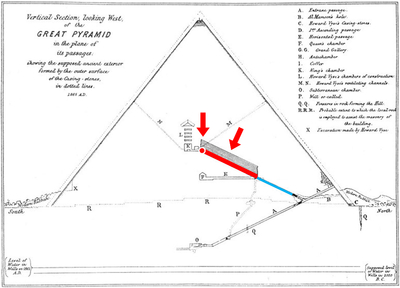
Introduction
In this Section, I will correct two crucial errors I've made in previous Sections about the operation of the Grand Gallery:
• first, there was not just one but two "staffs" installed onto the top platform: additionally to the driving shaft windlass, a redirecting shaft had to be implemented to guide the ropes in the slope of the Gallery.
• and second, there weren't three but really four ropes, all identical, involved in hauling the impactor: two lateral driving ropes (one above each ramp of the Gallery), and two central hauling ropes (in the central wooden caisson).
The assumption made in previous Section 41 that the Staff of Moses and Aaron's Rod were two different representations of just one single element, was indeed wrong: these two biblical Staffs, really were about two very different pieces of equipment of the Great Pyramid's Grand Gallery: when Aaron's Rod was made of Tamarix wood and was the driving shaft, that would have looked just like a modern ship windlass, the Staff of Moses was literally "broken in two places, forming three pieces", made of stone, probably granite, and formed by the association of four side by side Egyptian pulleys.
This first mistake I've made originated in a combination of various reasons, the most important one being that I simply didn't give much importance to what was set between the windlass and the start of the Gallery's slope; in my mind, only the windlass was important; but what a terrible mistake, because it is in this very particular piece of equipment that both Sarah and Abraham are originating from. We'll see that the couple Sarah and Abraham was about one of the two central Egyptian pulleys, and that their original names Sarai and Abram were actually about the second pulley: Sarai and Abram didn't change names; they were all together side by side (not in time, but in space).
In my defense, I also didn't expect to find any information at all about the equipment which turned out to be the redirecting Egyptian pulleys; but thanks to Ezekiel and his famous "wheels within the wheels" which can only move straight and which were drove by four "living creatures", we now have plenty informations and illustrations.
One of the most revealing teaching of Ezekiel is the fact that these living creature "angels" are about the ropes of the Grand Gallery: the ropes would have looked like flying up and down the Gallery without ever touching the ground; and because Ezekiel is describing four Egyptian pulleys and four angels, there also had to be four ropes… and that is correcting the second big mistake about my original "three ropes" assumption.
Not only the fact that operating four ropes would have been certainly easier in many ways, dealing with only one single type of rope, it would also have looked better, more balanced and perfectly symmetrical.
In this Section, we'll see the perfect example of the angel rope metaphor with Sarah's slave Hagar: the glorification of the two central hauling ropes which were in direct interaction with the two central Egyptian pulleys; and it will lead us to the real meaning of Sarah and Abraham, but also Sarai and Abram, both being the representations of the two central pulleys.
If Abraham is the father of the Jewish nation and the father of the Jewish people, it is because Abraham is the cradle of the Egyptian pulley.
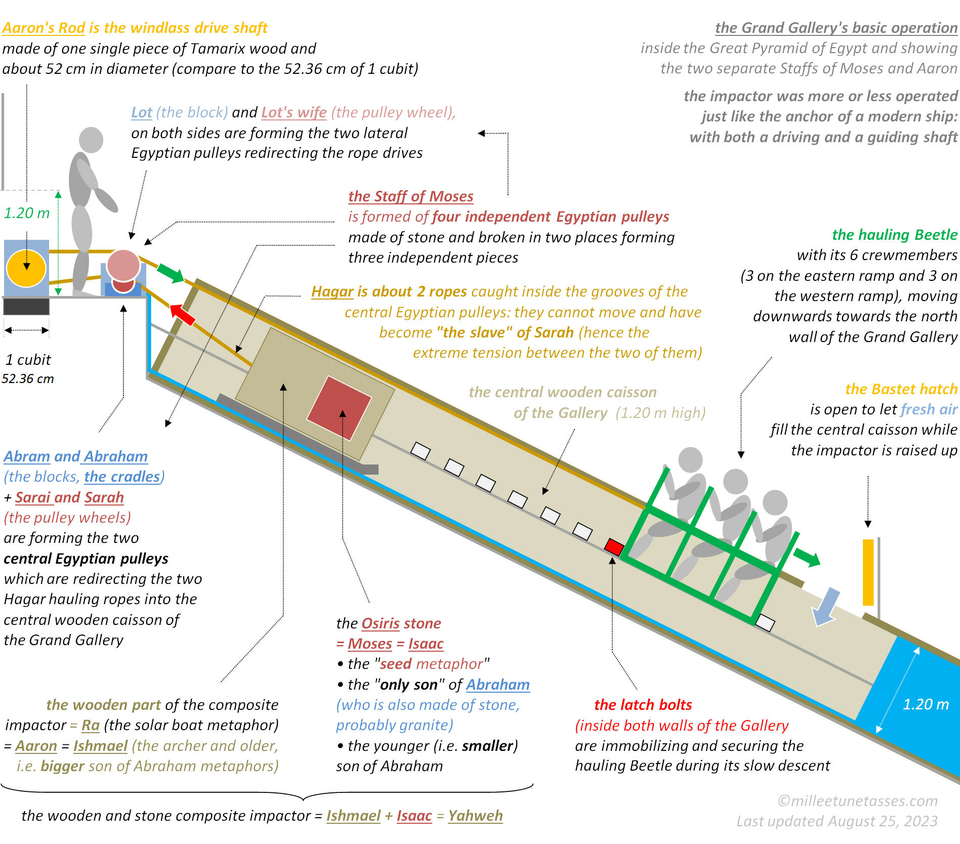
The Grand Gallery's basic operation inside the Great Pyramid of Egypt and showing the two separate Staffs of Aaron and Moses, respectively a wooden windlass driving shaft and a redirecting "shaft" made of four Egyptian pulleys 100% made of stone (probably granite).
That diagram include the hypothesis that the cut-off of the platform's Big Step, had only been roughly implemented after the operating time of the Great Pyramid (either for the draining of the inclined well procedure, or the evacuation of the equipment after the draining was done). Last updated August 25, 2023.
42.01 There had to be not one but two "staffs" on the platform of the Grand Gallery: a driving shaft and a guiding shaft
I have to admit that I never anticipated the second shaft before; because by oversimplifying the draws I've made of the operation of the Grand Gallery, putting everything on one single horizontal line, the need of the second "Staff" of the platform, never really showed up. I also honestly thought this second shaft would be completely "in the shadow" of the windlass: I simply didn't think it could have been of some real importance, and obviously that was a profound mistake, because as we'll see later in that Section, this second "guiding" shaft gave us Sarah and Abraham, as well as the distinction between Upper and Lower Egypt.
But because of the steep slope of the Grand Gallery, there had to be this second staff, one which would have had no driving capability what so ever, but which would have only took care of the guiding problem.
Because the two lateral rope drives of the hauling Beetle would have moved in the opposite direction to that of the central hauling rope(s) next to it, that staff couldn't have been in one single piece like the windlass, but would have to be formed of (at least) three independent elements; and will see that what ancient Egyptians used for the task, was four "Egyptian pulleys".
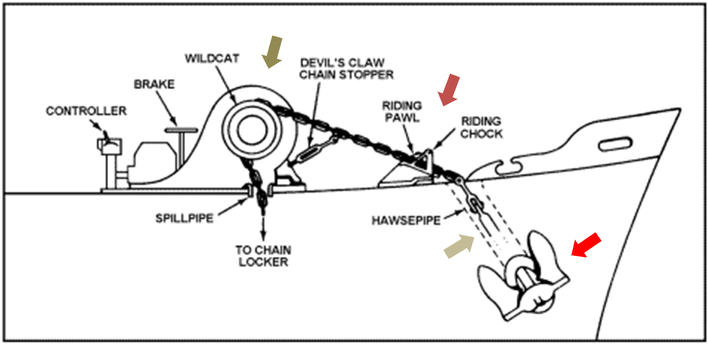
Side view of a horizontal anchor windlass, coupled with a fixed pulley system that is changing the direction of the chain: https://www.globalsecurity.org/military/library/policy/army/fm/55-501/chap21.htm
42.02 In many ways, the impactor of the Great Pyramid was operated just like an anchor on a modern ship
Because the drive shaft windlass of the Grand Gallery was installed so far away from the northern edge of the platform, and so close to the southern wall of the Gallery, there had to be an additional and massive piece of equipment to manage the driving and hauling ropes in the change of direction of the traction forces when approaching the elevation level of the platform.
The most incredible is that the design chosen by the ancient Egyptians to operate the impactor appears to be a quite perfect copy of how is operated today modern anchors aboard ships: additionally to the windlass that is taking care of the power problem, there is another piece of equipment which is redirecting the ropes through the hawsepipe; and just like that, there was exactly the same thing in the Great Pyramid between the windlass drive shaft of the Grand Gallery's platform and the steep slope of the Gallery.
So, not only the similarities between the operation of both the impactor and a modern anchor are very troubling and only reinforce the idea that the Great Pyramid was indeed all about water from top to bottom, it also literally brings the redirecting mechanism to the forefront of the study.
We know, or we think we know, that ancient Egyptians didn't use real pulleys at the time when the Great Pyramid was built; but it doesn't matter if they did or not, because real pulleys (wooden pulleys) couldn't have supported the efforts generated during the operation of the Grand Gallery.
It means that ancient Egyptians used something close to a pulley, but able to sustain huge amount of pressure, and surely made of stone. This very particular kind of pulley hasn't been discovered yet in archeological sites, but it had been "reinvented" exactly 9 years ago by Stephen and Gregory Blakely, two independent researchers and brothers in the United States. The Blakely brothers imagined that Egyptian pulley in the context of the construction of the Pyramid, and they could be right about that, but what I'm certain of, is that four units of their pulleys had been operated on the top platform of the Grand Gallery.
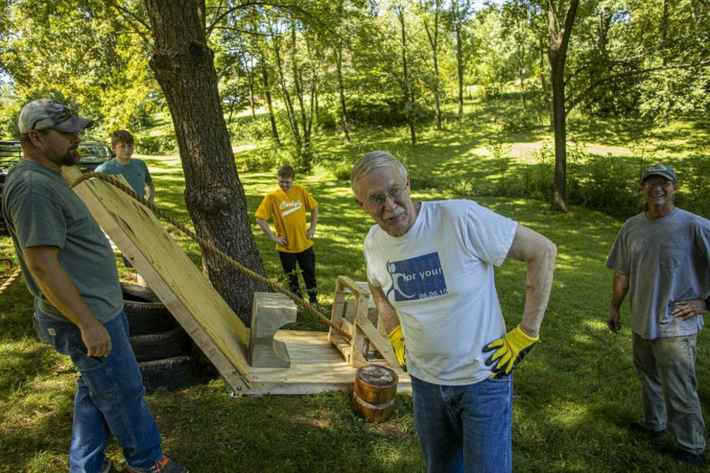
Mechanical engineers and independent researchers Stephen Blakely (in the middle on the above photograph, with the cradle on its side and the pulley on the grass) and his brother Gregory, are the ones who "reinvented" what they've called "the Egyptian pulley": https://dailyegyptian.com/102401/news/southern-illinois-man-tests-pyramid-creation-theory/#
42.03 The "reinvention" of 100% stone Egyptian pulleys by the Blakely brothers, USA
Everybody agrees on the fact that ancient Egyptians didn't use "conventional" modern pulleys as we know them today for the construction of the Great Pyramid, and I have no problem with that, but it doesn't mean that they didn't use some kind of equipment that would have done most of what modern pulleys can do, and by only using stone.
These kind of pulleys made of stone have actually already been "reinvented" by independant researchers and brothers Stephen and Gregory Blakely, and I first want to give a special thanks to both of them, as well as all the people involved in their work: "Reinventing the Egyptian Pulley", by Stephen Blakely and Gregory Blakely; EXARC Journal Issue 2014/3: https://exarc.net/issue-2014-3/at/reinventing-egyptian-pulley
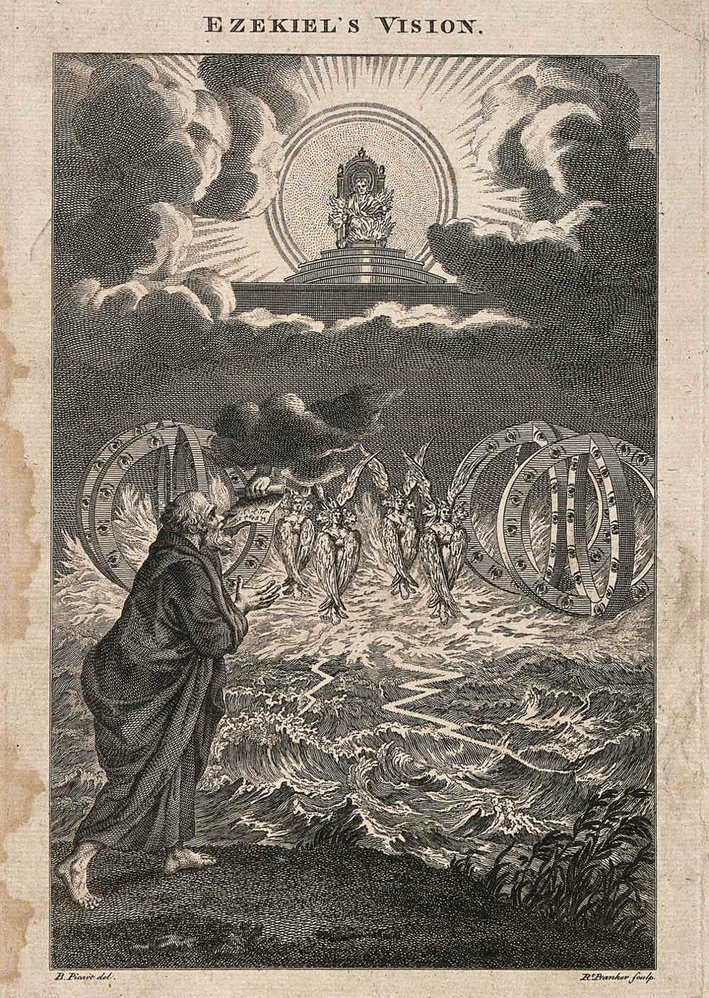
"Ezekiel has a vision of angels and spheres with eyes coasting along the thunderstruck sea". Etching by R. Pranker, 176-, after Bernard Picart, 1673-1733. Wellcome Collection, London: https://wellcomecollection.org/works/yebnb6mv/items
42.04 Ezekiel's "Wheels within the Wheels" are Egyptian pulleys: there were four of them and four ropes in the Grand Gallery
Now, the most amazing thing happened: at the same time that I remembered the Egyptian pulley when shuffling through all the images saved during 2 years and a half of surfing the internet, I somehow ended up looking at representations of the so famous "Wheels within the Wheels" of Ezekiel. And then it struck me: Ezekiel's Wheels were what the Blakely brothers had called Egyptian pulleys.
Not only Ezekiel's Wheels are the pulleys, but Ezekiel's "Living creatures" also are the ropes. Ezekiel chapter 1 describes the Wheels in a very particular way:
• they were four "Wheels within the Wheels" and four "Living Creatures" by their side; one Creature for every Wheel
• when the "Living Creatures" moved, the "Wheels within the Wheels" moved
• when the "Living Creatures" stopped moving, the "Wheels within the Wheels" stopped moving as well
• when the "Wheels within the Wheels" did move, they can only have moved straight and can never have moved left or right
• the "Living Creatures" appeared with one single and rigid straight leg only
In short, when you read Ezekiel chapter 1 and you try to make some sense out of it, and if you know about the Blakely's Egyptian pulley, you don't need no "out of this world" explanation, and you don't have to call this chapter "Science-fiction in the Bible": you know that the "wheels within the wheels" are simply Egyptian pulleys and that Ezekiel is the personification of the four pulleys of the Grand Gallery.
So, when it is said that Ezekiel has the Vision of God (Yahweh) coming to him, it is the vision of the impactor raising into the Grand Gallery and getting closer and closer to the pulleys during its slow ascent in the Gallery.
This is what Ezekiel is really about.
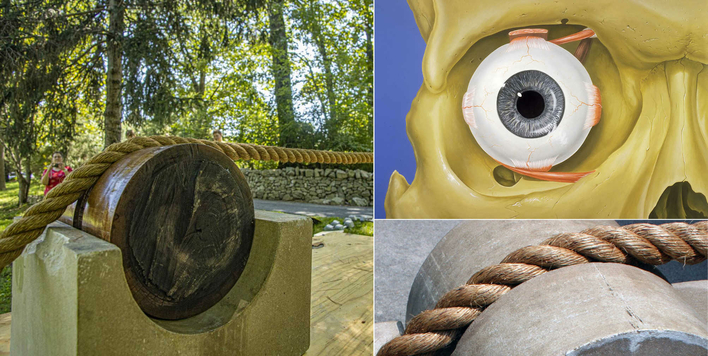
Southern Illinois man Stephen Blakely tests pyramid creation theory with the "recreation" of an Egyptian pulley: https://dailyegyptian.com/102401/news/southern-illinois-man-tests-pyramid-creation-theory/#
Normal anatomy of the human eye and orbit, anterior view, by Patrick J. Lynch, medical illustrator: https://en.wikipedia.org/wiki/Orbit_%28anatomy%29
42.05 The perfect metaphor of the eye moving into its orbit (muscles and lubrication included)
Probably the most important metaphor about Ezekiel's Wheels, is the one about the eyes:
Ezekiel 1-15 Now as I looked at the living creatures, behold, a wheel was on the earth beside each living creature with its four faces. 16 The appearance of the wheels and their workings was like the color of beryl, and all four had the same likeness. The appearance of their workings was, as it were, a wheel in the middle of a wheel. 17 When they moved, they went toward any one of four directions; they did not turn aside when they went. 18 As for their rims, they were so high they were awesome; and their rims were full of eyes, all around the four of them. 19 When the living creatures went, the wheels went beside them; and when the living creatures were lifted up from the earth, the wheels were lifted up.
Over centuries, many artists have tried to figure out what to do with these eyes, and they've come up with kind of "out of this world" illustrations which look like they've been made under the influence of massive abuse of drugs, alcohol or both, and which I personally find pretty freaky and not so different than some kind of Frankenstein's creature.
Of course Ezekiel's eyes are only metaphorical: not only they are indicating just how the Wheels (the pulleys) were functioning within other Wheels (the cradles), but they also are indicating how the pulleys were put into motion in the first place: Ezekiel's eyes are only demonstrating that the Wheels within the Wheels were functioning just like the eye in its orbit.
The metaphor is about the movement of the eye in its orbit, but also about the muscles which are putting the eye into motion and (most probably) about the lubrication of the pulleys, just like the eye is also constantly lubricated.
"Wherever the spirit [of the living creatures] would go, they would go, and the wheels would rise along with them, because the spirit of the living creatures was in the wheels. When the creatures moved, they also moved; when the creatures stood still, they also stood still; and when the creatures rose from the ground, the wheels rose along with them, because the spirit of the living creatures was in the wheels." Ezekiel 1:20-21: https://www.biblegateway.com/passage/?search=Ezekiel%201&version=NKJV
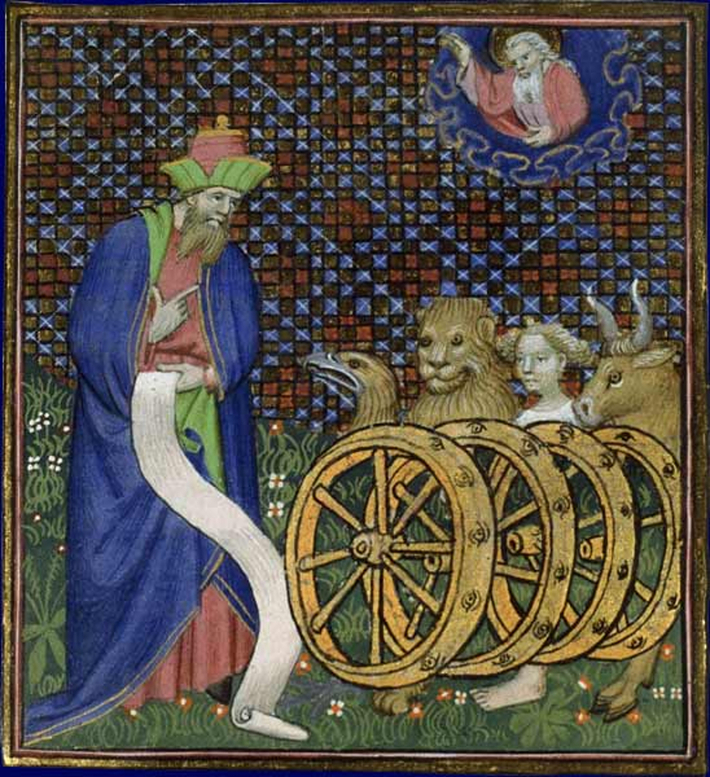
Ezekiel's vision showing the four Wheels and the four "Living Creatures", by Guiard des Moulins, Bible historiale "Vision d'Ézechiel: le char de Dieu", Bibliothèque Nationale de France BNF: http://expositions.bnf.fr/bestiaire/grand/d_23.htm
42.06 Ezekiel Chapter 1, NKJV (New King James Version)
1 Now it came to pass in the thirtieth year, in the fourth month, on the fifth day of the month, as I was among the captives by the River Chebar, that the heavens were opened and I saw visions of God. 2 On the fifth day of the month, which was in the fifth year of King Jehoiachin’s captivity, 3 the word of the Lord came expressly to Ezekiel the priest, the son of Buzi, in the land of the [b]Chaldeans by the River Chebar; and the hand of the Lord was upon him there.
4 Then I looked, and behold, a whirlwind was coming out of the north, a great cloud with raging fire engulfing itself; and brightness was all around it and radiating out of its midst like the color of amber, out of the midst of the fire. 5 Also from within it came the likeness of four living creatures. And this was their appearance: they had the likeness of a man. 6 Each one had four faces, and each one had four wings. 7 Their legs were straight, and the soles of their feet were like the soles of calves’ feet. They sparkled like the color of burnished bronze. 8 The hands of a man were under their wings on their four sides; and each of the four had faces and wings. 9 Their wings touched one another. The creatures did not turn when they went, but each one went straight forward.
10 As for the likeness of their faces, each had the face of a man; each of the four had the face of a lion on the right side, each of the four had the face of an ox on the left side, and each of the four had the face of an eagle. 11 Thus were their faces. Their wings stretched upward; two wings of each one touched one another, and two covered their bodies. 12 And each one went straight forward; they went wherever the spirit wanted to go, and they did not turn when they went.
13 As for the likeness of the living creatures, their appearance was like burning coals of fire, like the appearance of torches going back and forth among the living creatures. The fire was bright, and out of the fire went lightning. 14 And the living creatures ran back and forth, in appearance like a flash of lightning.
15 Now as I looked at the living creatures, behold, a wheel was on the earth beside each living creature with its four faces. 16 The appearance of the wheels and their workings was like the color of beryl, and all four had the same likeness. The appearance of their workings was, as it were, a wheel in the middle of a wheel. 17 When they moved, they went toward any one of four directions; they did not turn aside when they went. 18 As for their rims, they were so high they were awesome; and their rims were full of eyes, all around the four of them. 19 When the living creatures went, the wheels went beside them; and when the living creatures were lifted up from the earth, the wheels were lifted up. 20 Wherever the spirit wanted to go, they went, because there the spirit went; and the wheels were lifted together with them, for the spirit of the living creatures was in the wheels. 21 When those went, these went; when those stood, these stood; and when those were lifted up from the earth, the wheels were lifted up together with them, for the spirit of the living creatures was in the wheels.
22 The likeness of the firmament above the heads of the living creatures was like the color of an awesome crystal, stretched out over their heads. 23 And under the firmament their wings spread out straight, one toward another. Each one had two which covered one side, and each one had two which covered the other side of the body. 24 When they went, I heard the noise of their wings, like the noise of many waters, like the voice of the Almighty, a tumult like the noise of an army; and when they stood still, they let down their wings. 25 A voice came from above the firmament that was over their heads; whenever they stood, they let down their wings.
26 And above the firmament over their heads was the likeness of a throne, in appearance like a sapphire stone; on the likeness of the throne was a likeness with the appearance of a man high above it. 27 Also from the appearance of His waist and upward I saw, as it were, the color of amber with the appearance of fire all around within it; and from the appearance of His waist and downward I saw, as it were, the appearance of fire with brightness all around. 28 Like the appearance of a rainbow in a cloud on a rainy day, so was the appearance of the brightness all around it. This was the appearance of the likeness of the glory of the Lord.
Source: https://www.biblegateway.com/passage/?search=Ezekiel%201&version=NKJV
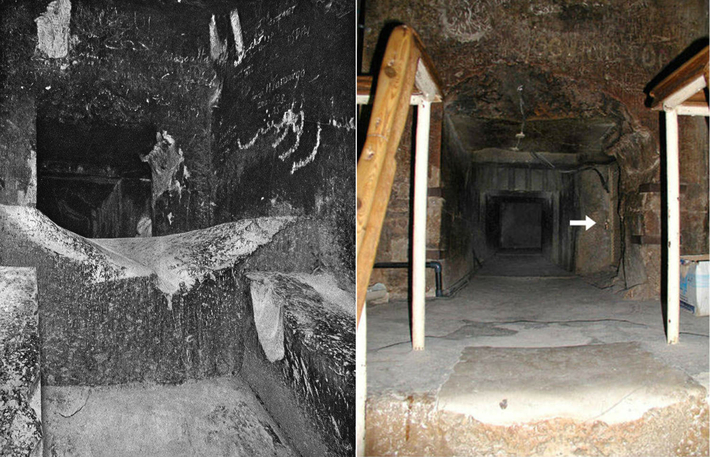
The top platform of the Grand Gallery in the Great Pyramid of Egypt, showing the hollowed-out cavity in the "Big Step". The white arrow is indicating the original location of the biosand filter "sarcophagus" of pharaoh Khufu.
42.07 Was the cut-off in the big step made before or after the operating time of the Pyramid?
There is indeed a major problem with this cut-off, and that is about the very poor craftsmanship that had been engaged for its realization; in fact it is echoing the very poor quality of the biosand filter "sarcophagus".
We know now that the filter was originally located in what's today the electrical room of the Great Pyramid, and that it has been literally digged-out of its original location; probably explaining why its top surface looks like someone has hammered down the whole top part of the structure.
The thing is that it really looks like the cut-off part of the Big Step of the Grand Gallery's platform had been treated the exact same way, with haste and very low care.
My assumption is that the cut-off had been implemented after the Great Pyramid was in operation, and that it either had to do with the draining of the well's procedure, or the evacuation of the equipment out of the pyramid after the draining was complete.
It doesn't imply though, that instead of the cut-off was only a flat portion of the platform: there could have been something else protruding from the platform; it could have been anything, but I'll only assume from now on that:
• the cut-off had been made after the operation time of the Great Pyramid,
• that the ground was flat, just like the rest of the platform, and that the central Egyptian pulley "Abraham" was just sitting right there.
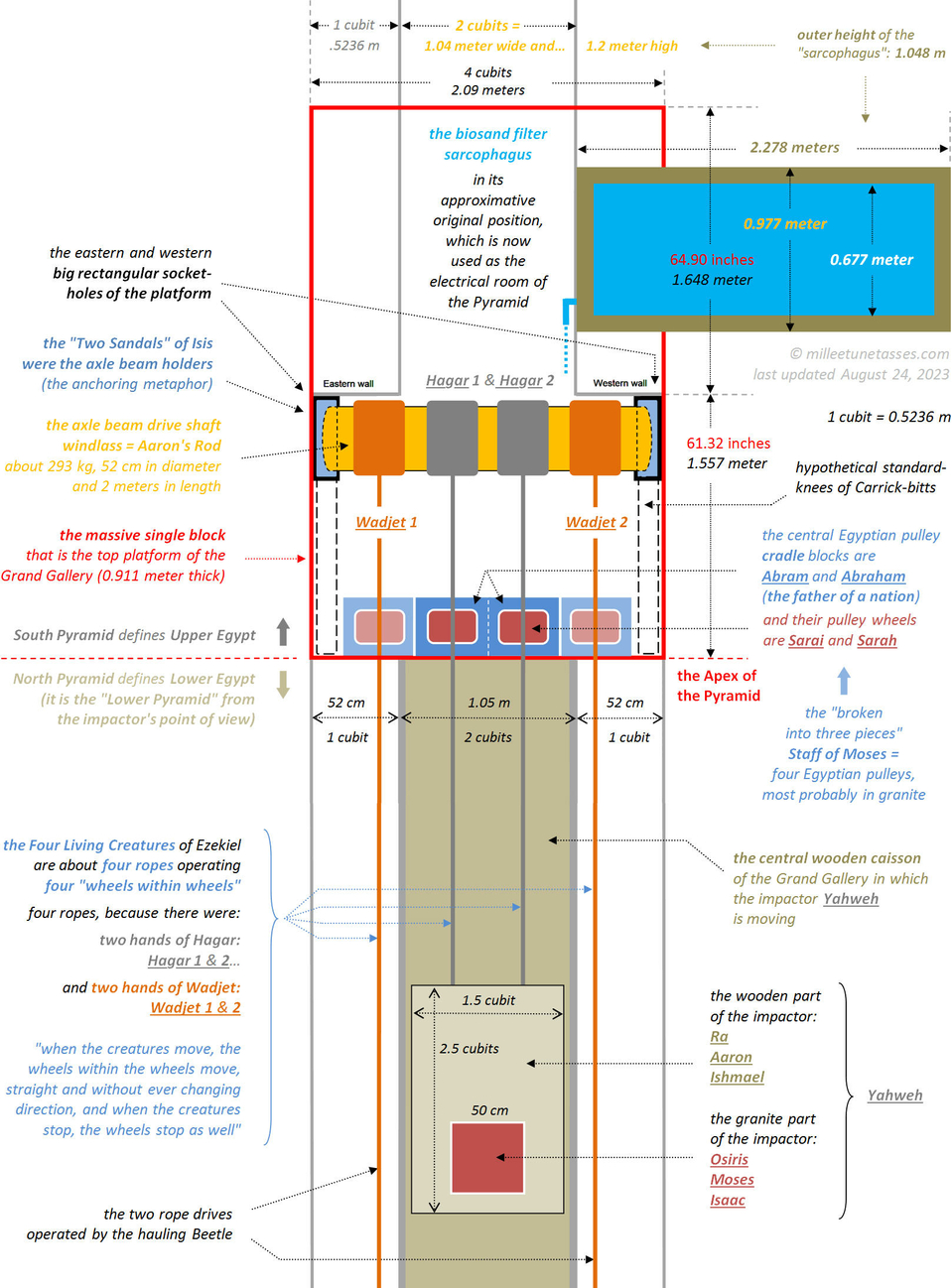
Operation of the platform of the Grand Gallery, in the Great Pyramid of Egypt. Last updated August 24, 2023.
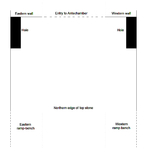
Original draw of the platform by Stefan A. H. Holmgren: https://khufupyramid.dk/inside-dimensions/grand-gallery
Data source for the size of the top platform single block (inches): The pyramids and temples of Gizeh. Antechamber and passages, section 47 (page 75). Petrie, W. M. Flinders (William Matthew Flinders), Sir, 1853-1942: https://archive.org/details/cu31924012038927/page/n113/mode/2up
Inner and outer dimensions of the biosand filter, showing that the "sarcophagus" wouldn't have any problem being transported from its original position to the King's chamber: http://www.rickrichards.com/egypt/Egypt7_coffer.html
42.08 The problem of the four Egyptian pulleys' width in the four cubits width of the Grand Gallery
Sadly, I have to admit that the above drawing of the top platform of the Grand Gallery is far from being entirely satisfactory; in particular because of the problem I'm facing trying to make the four pulleys perfectly work with the windlass.
I'm pretty sure there is still something I'm missing here, because right now, I simply cannot install four Egyptian pulleys of 1 cubit large without messing everything up on the windlass.
And this is the problem: knowing that the Grand Gallery is 4 cubits wide (from the base of the eastern wall to the base of the western wall), and that there were 4 Egyptian pulleys side by side, what are the chances that ancient Egyptians didn't design 4 units of precisely 1 cubit wide?
In my opinion, these chances are very, very low; because just like having 4 identical ropes is much more both elegant and efficient than having only 3 ropes, with one of them twice the size of the other two, the idea of having 4 pulleys which wouldn't be 1 cubit wide in a perfect 4 cubits wide space, simply doesn't seem right.
The problem is that until today, I don't have more information on the windlass, other than the fact it weighed 293 kilograms and was made of Tamarix wood (previous Section 41).
42.09 The Egyptian pulleys are the reason of the separation between Upper and Lower Pyramid and Egypt
There is another unexpected turn in the deciphering and the interpretation of the Upper and Lower Egypt thing.
I've been getting closer and closer to a satisfactory answer to that very particular problem, for about 2 years now. I understood very quickly that this differentiation between Upper and Lower Egypt didn't have any legitimacy all by itself in the "real world" of Egypt as a country, and I knew that it was all about the Great Pyramid; but at the beginning I thought that Upper Egypt was about Upper Pyramid (remember, the Great Pyramid wasn't finished during its operation time: there was a flat roof at the level of Lady Arbuthnot's chamber, and the Pyramid would have actually exactly looked like a simple mastaba), and Lower Egypt was about Lower Pyramid (everything which was underneath the flat roof, including the Grand Gallery).
But very quickly, this first explanation failed when faced to some ancient Egyptian texts.
Then I understood that it was not the flat roof but the top platform of the Gallery where the separation was between Upper and Lower Pyramid: the Apex of the Pyramid is only 1 cm away from the northern end of the giant block that is the platform; and I thought that was it: this giant block was the key.
But again I was wrong: the platform isn't the key to that problem: the pulleys are!
It was the Egyptian pulleys which indicated the separation between Lower Pyramid (Northern Pyramid actually) and Upper Pyramid (Southern Pyramid really)
Unfortunately, I don't know in which deity or deities, these pulleys have been deified in the ancient Egyptian religion as I just found out about them, but unless another discovery allows us to get an even better deciphering and a more precise location of where really started Upper (South) and Lower (North) Pyramid, I would assume that the pulleys, are the answer and the origin of Upper and Lower Egypt.
42.10 Other problems to resolve...
• Were Abram and Abraham one single block or two separate blocks?
• Which water was used for the lubrication of the pulleys (the water from the biosand filter sarcophagus or "plain" water coming from somewhere else?
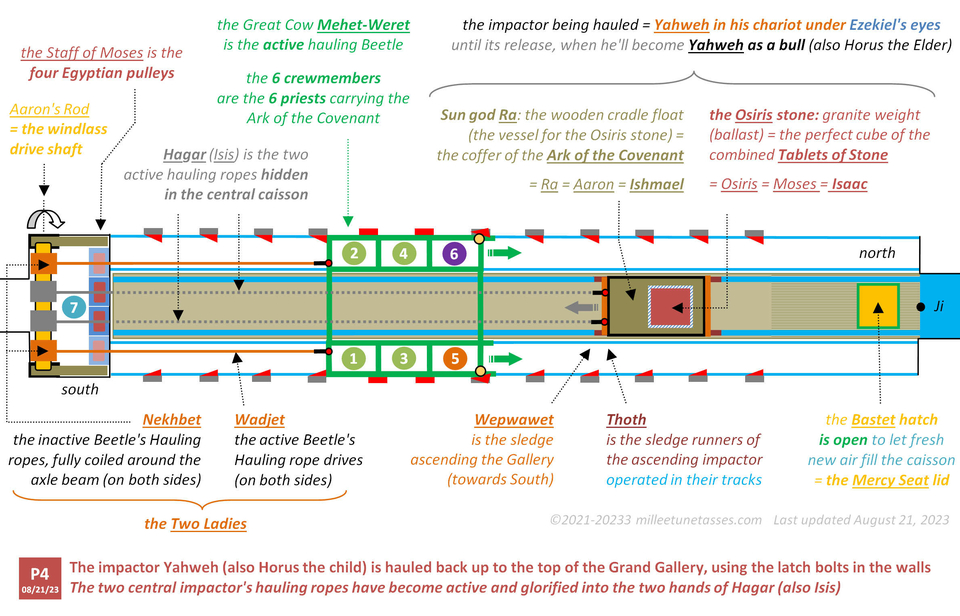
Operating Phase P4 of the Grand Gallery: the hauling of the impactor. Last updated August 21, 2023.
42.11 Operating phase P4: the hauling process of the impactor by the Beetle is in progress
Other phases in Section 26 (but incorrectly without the Egyptian pulleys, and with only 3 ropes instead of 4).
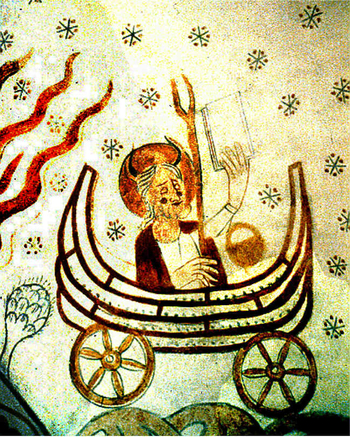
42.12 Ezekiel’s Vision of God Yahweh in his "chariot"
Here is how the internet site The Torah is introducing Ezekiel chapter 1:
"Ezekiel 1 was chosen as the haftarah for the first day of Shavuot, as it picks up on the theme of divine revelation, which is what the festival celebrates. This chapter is part of a larger complex consisting of Ezekiel 1:1–3:15 which belongs to the genre of the prophetic call narrative, and it details how YHWH arrives in his chariot to speak with Ezekiel.
The text is so peculiar that Erich von Däniken (b. 1935), a Swiss “ufologist,” i.e., someone who looks for evidence of alien visits to earth, used Ezekiel’s vision of the chariot as a parade example of an alien visitation story. In fact, this theory proved so convincing to one NASA scientist, Josef Blumrich (1913–2002), that he wrote a whole book on it, including specs outlining how such a spacecraft would have functioned.
Von Däniken was hardly the first person to notice the strangeness of Ezekiel’s account of the chariot. Jewish tradition has long considered the chapter to be problematic, if not outright dangerous. […] Indeed, a whole branch of Jewish mysticism has developed from Ezekiel’s description of the divine chariot or merkāvâ: Merkavah mysticism, and philosophers such as Maimonides, believed that it concealed challenging notions about the universe."
Full article (highly recommended) at: https://www.thetorah.com/article/ezekiels-vision-of-god-and-the-chariot
Moses with rams' horns (Moses is a reinterpretation of the granite stone of the impactor) in a speeding Ark of the Covenant transformed into a chariot (read previous Sections 40 and 41): Kirkerup. c.1350. (image M-K 15-041 in the link). Sect 2, south arch, right. Moses, with nimbus and horns, seated in boat shaped cart with wheels, (ark of the covenant), left hand holds tablets of the law, right hand a fork, a basket under the tablets (image slightly edited for clarity): https://the-orb.arlima.net/encyclop/culture/artarch/danish/tomoses/tomoses.html
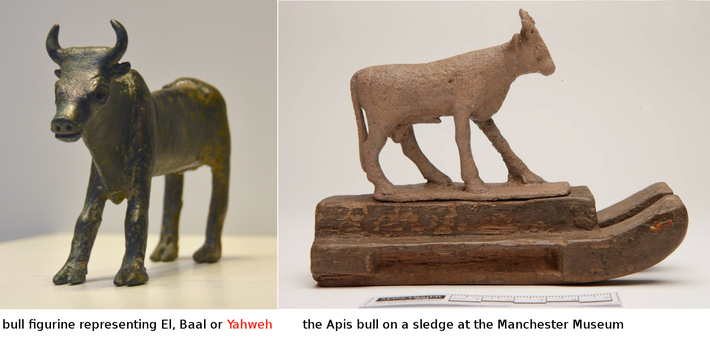
Early Iron Age bull figurine from Bull Site at Dhahrat et-Tawileh (modern West Bank, ancient Ephraim), representing El, Baal or Yahweh. Photograph by Nathaniel Ritmeyer: https://en.wikipedia.org/wiki/Yahweh#/media/File:Bull_site_statuette.png
Image on the right: "This small (8.2 x 7.5cm) copper alloy statuette depicts the sacred Apis bull – recognisable by the remains of a sun disk between its curved horns. The bull was at the centre of an elaborate cult, and was believed to be the earthly incarnation of the god Ptah". Manchester Museum: https://egyptmanchester.wordpress.com/2012/07/23/object-biography-7-a-statuette-of-the-apis-bull-acc-no-13000a-b/
42.13 Jewish god Yahweh is the reinterpretation of the ramming impactor of the Great Pyramid
We've seen that ancient Egyptians looked at the operation of the Grand Gallery mostly from the point of view of Osiris, who had to be saved from the waters of the Nile in the Osiris myth (Osiris had been tricked into a wooden coffin designed to perfectly fit his body, and then thrown into the waters of the Nile, before been saved by Isis).
In other words it is the operation of Isis (the hauling rope) and Osiris (the granite weight of the impactor), that was the core of the ancient Egyptian religion.
In the Hebraic religion, things are much more elaborate and it is the entire operation of the impactor that is meticulously adapted and unified in a whole new telling, staring Abraham (the cradle of the central Egyptian pulley) and Yahweh (the bull metaphor about the ramming impactor).
Much more important, is that when ancient Egyptians created their religion with more than 2,000 gods and goddesses, each and every one of them being the glorification of one particular point of the whole scientific and technological knowledge, the Hebraic Bible only has one god: Yahweh, the impactor itself which gave life to the Great Pyramid every 15 to 20 minutes or so (Section 40 and 41).
Just like the ancient Egyptian god Horus and the Apis bull, Yahweh is the deification of the impactor, and there is one particular event in the Bible which is perfectly describing its operation and its relationship with Abraham, and that is the Binding of Isaac.
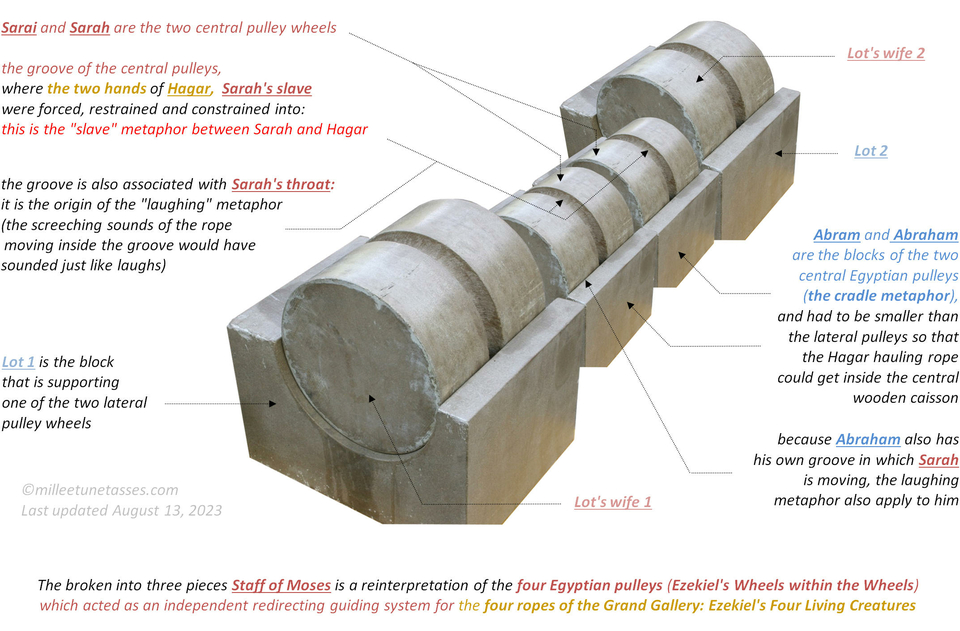
The "broken in two places" Staff of Moses which is resulting in the formation of "three pieces", but made of four independant Egyptian pulleys. Ancient Egyptian pulleys cropped from original image, available at https://exarc.net/issue-2014-3/at/reinventing-egyptian-pulley
42.14 Ezekiel is the personification in a human form of the four Egyptian pulleys
To be honest, I really didn't expect to go that far in the deciphering of the Great Pyramid's operation, but the Hebraic religion is such an amazing piece of Art that I wonder if there is anything we are not be able to understand of the operation of the Grand Gallery.
I hope that if you've come so far in The Pyramids of the Cold, you've already seen and understood that what is described in the Bible as "GOD", really is the impactor of the Great Pyramid; and what is described as "the JEWISH PEOPLE" really is the glorification of the 7 teammates of the Grand Gallery.
We'll see later in this post that Angels, the messengers of God sent to the Jewish people, really are about the driving and hauling ropes of the Gallery; but with Ezekiel's Vision, it is the hauling of the impactor itself which is described; and it is described from a very particular place: the very end of the platform, where the redirecting shaft had been set.
If the so famous and extraordinary "Wheels within the Wheels" of Ezekiel are about four Egyptian pulleys, then Ezekiel himself is the personification in a human form of these four pulleys.
42.15 Were the two central Egyptian pulleys the same size or smaller than the two lateral ones?
Unfortunately, I cannot determine if the four Egyptian pulley units did have the exact same size (both for the cradles and the pulleys themselves), but I chose to represent the central units smaller, only to let the door open to that possibility and because the central gutter is indeed at a lower elevation than the lateral ramps.
42.16 The hypothesis that the blocks of the pulleys really had "four faces"
Also I took the liberty to set the pulleys into "four faces" cradles, but again maybe they were exactly as the ones designed by the Blakely brothers.
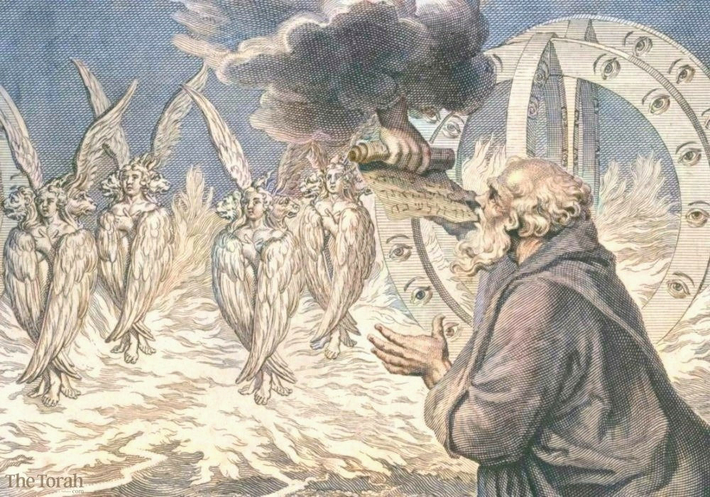
Ezekiel’s Vision (detail & colorized), Bernard Picart, 1693 – 1783: https://www.thetorah.com/article/ezekiels-vision-of-god-and-the-chariot
42.17 Ezekiel and the paper feed metaphor
We've already seen in previous Section 41 that the endless winding and unwinding of the ropes upon the windlass have been beautifully metaphorically represented into the endless sequence of Aaron's Staff (the windlass) being eaten by a snake (a rope), only to reappear again magically into that same wooden Staff.
Here, there is another beautiful metaphor where Ezekiel, as the personification of the four redirecting Egyptian pulleys had to be "fed" with the ropes before assuming their task and taking care of the problem induced by the abrupt change in slope between the horizontal platform and the Gallery.
Of course, there is not really such a thing as a scroll, but rather the windlass itself and the ropes getting to the pulleys or coming from the pulleys.
Ezekiel 2-9 Now when I looked, there was a hand stretched out to me; and behold, a scroll of a book was in it.
Ezekiel 3-1 Moreover He said to me, “Son of man, eat what you find; eat this scroll, and go, speak to the house of Israel.” 2 So I opened my mouth, and He caused me to eat that scroll.
https://www.biblegateway.com/passage/?search=Ezekiel%203&version=NKJV
42.18 The two wings pointing downwards and two wings pointing upwards of Ezekiel's Living Creatures
Most probably, if the four Living Creatures of Ezekiel have four wings each, two wings pointing downwards and two wings pointing upwards, it is because two ropes were moving downwards when the two other ropes were simultaneously moving upwards.
But when you hear "Living Creatures", what is absolutely certain is that these so-called "Creatures" are really not "Living" at all. When you see a cat or a squirrel crossing the road, you don't ever see a "Living cat", or a "Living squirrel": you just see a cat or a squirrel.
If you feel the urge to add the term "Living" to something that moves, it is only to point out that whatever is moving, although not a living being, simply looks like a living being: Ezekiel's Living Creatures just look like they were Living Creatures.
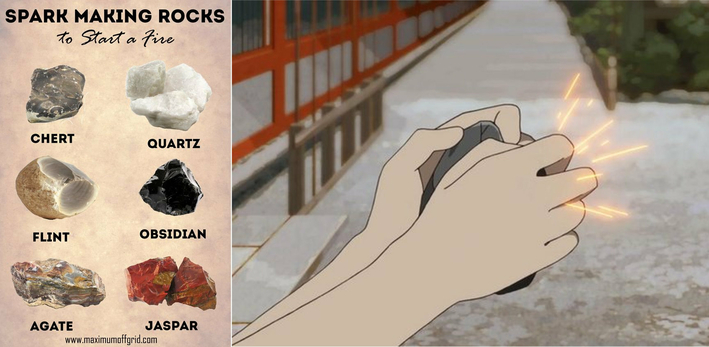
Spark making rocks to start a fire from maximumoffgrid
42.19 Ezekiel's "sparks jumping from a fire" are because of the endless friction between the pulleys and the cradles
One of the many unknown parts of the operation of the Grand Gallery, is how long was it operated in the first place. Was it for several days only? Weeks? Months? Years?
But there is one part which is pretty sure: to cool down the Queen chamber efficiently enough, the Gallery had to be operated all day long, maybe for ten consecutive hours. If you stop producing the pressurized water and create the fog of microdroplets that would induce the evaporative cold, the chamber will warm up again.
The result is that the four redirecting pulleys had to be operated for ten consecutive hours as well, and inevitably they would heat up, and either metaphorically or literally produce sparks, as mentioned in Ezekiel 1-14.
Ezekiel (Contemporary English Version) 1-12 The four living creatures went wherever the Spirit led them, and they moved together without turning their bodies, because each creature faced straight ahead. 13 The creatures were glowing like hot coals, and I saw something like a flaming torch moving back and forth among them. Lightning flashed from the torch every time its flame blazed up. 14 The creatures themselves moved as quickly as sparks jumping from a fire.
https://www.biblegateway.com/passage/?search=Ezekiel+1&version=CEV
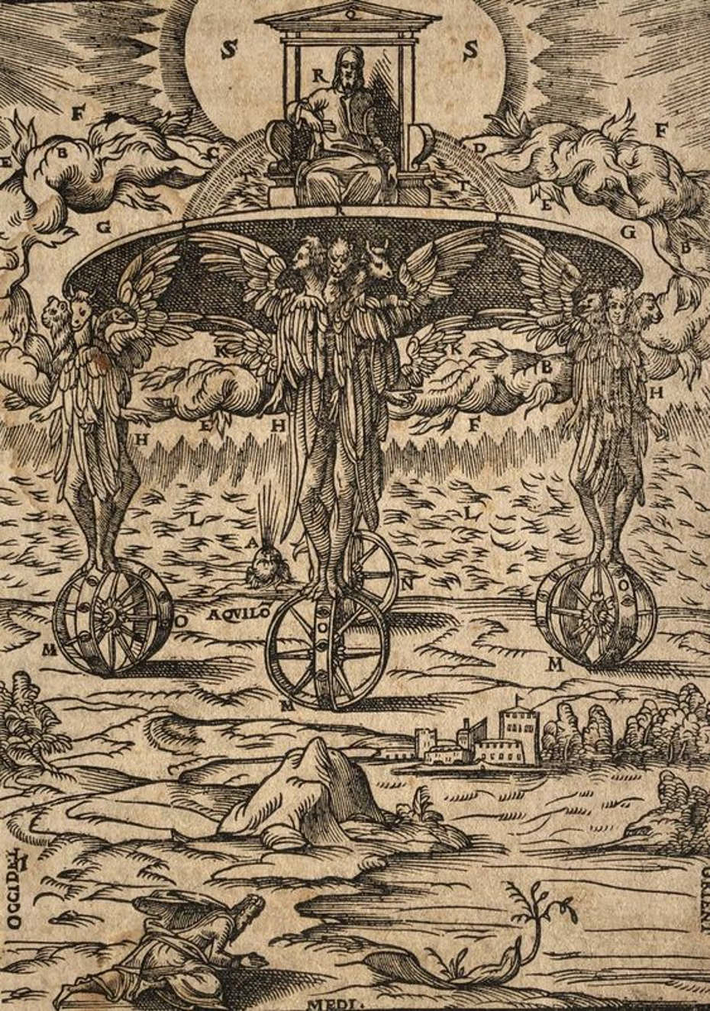
Ezekiel’s vision of the heavenly throne room includes God reigning above, the wheel within the wheel, and the four creatures (man, lion, ox, and eagle). Illustration from a book by Santes (or Xantes) Pagnino (Latin: Xanthus Pagninus) (1470–1541), also called Sante Pagnini or Santi Pagnini, an Italian Dominican friar, and one of the leading philologists and Biblical scholars of his day. More info on this particular image at the online Pitts Theology Library: https://dia.pitts.emory.edu/dia/image_details.cfm?ID=13029
42.20 The nearly perfect upside down representation of Ezekiel's vision by Santes Pagnino
The above representation of Ezekiel's Wheels is of course a perfect illustration of the "out of this world" and "under massive illegal substances abuse" interpretations of the Wheels, but when you take some distance, it is not so bad actually:
• God Yahweh is perfectly represented being raised up in the air, comfortably nested in a closed space (probably the central wooden caisson or the Grand Gallery itself, I don't know)
• the Wheels are perfectly represented being put into motion by the Living Creatures' feet
• the Living Creatures (the ropes) are perfectly represented between the Wheels (the Egyptian pulleys) and God (Yahweh)
Actually, the only big mistake here, is that God Yahweh shouldn't be represented pushed up in the air from underneath him, but hauled up in the air from above him… but of course Yahweh is God, and I suppose nothing should be ever represented above himself.
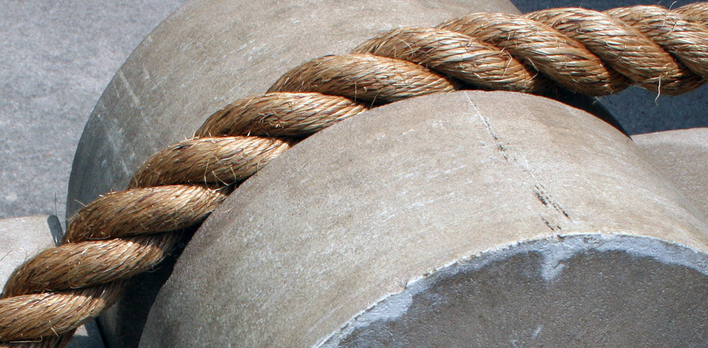
Operation of an Egyptian pulley showing the rope caught in the groove of the pulley cylinder. Source Exarc: https://www.youtube.com/watch?app=desktop&v=g_dAZpCAElA
42.21 Ezekiel's "Living Creatures" are the ropes: they would have looked like creatures with only "one single rigid and straight leg"
I find the nearly "anatomical" description of the four Creatures of Ezekiel very resembling: because the ropes would have been under a huge amount of tension, they would have looked like solid and rigid legs: one rope looking just one single rigid leg.
This "single and rigid" leg doesn't appear as so in the texts of Ezekiel, but in a commentary of these texts, made in the internet website The Torah; nethertheless, what another beautiful metaphor, isn't it?
"As the cloud comes nearer, Ezekiel is able to distinguish four “creatures” (v. 5: ḥayyôt, lit. living beings, or as I like to call them in Yiddish: vilde khayes “wild animals”). Each of these vaguely human creatures has four faces and four wings (v. 6), as well as “a single rigid leg” (v. 7, or: straight legs), whose foot (or: feet) end in a calf’s hoof."
https://www.thetorah.com/article/ezekiels-vision-of-god-and-the-chariot
From Ezekiel 1-7 (other version): Their legs were straight, and the soles of their feet were like the soles of calves’ feet.
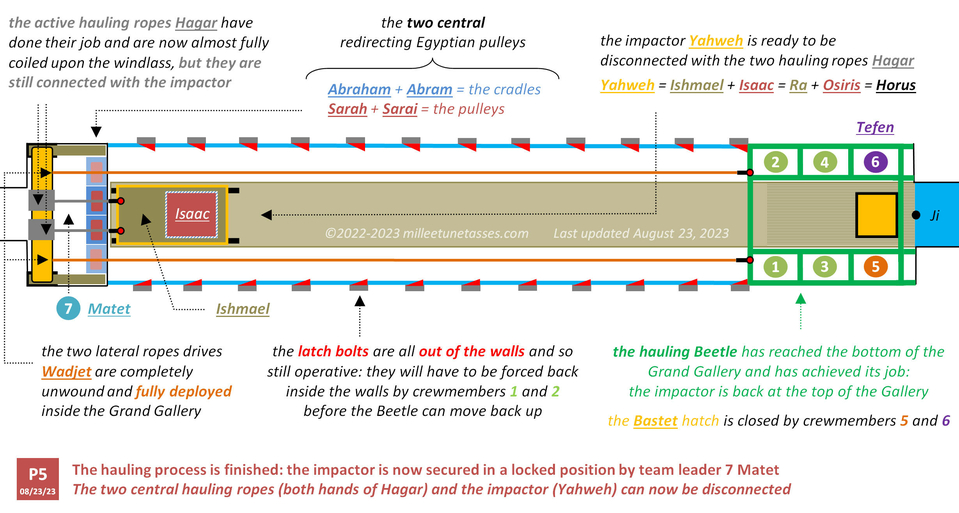
Great Pyramid of Egypt, Operating Phase P5 of the Grand Gallery. Last updated, August 23 2023.
42.22 Operating phase P5: the hauling process of the impactor by the Beetle is finished
Other phases in Section 26 (but incorrectly without the Egyptian pulleys, and with only 3 ropes instead of 4).
42.23 Aaron's Rod and the Staff of Moses
What appears to be certain, is that two "Staffs" had to be set on the platform of the Grand Gallery: one was the windlass drive shaft, and the second one resulted of the association of the three Egyptian pulleys.
When the first one was made of Tamarisk wood, the second one was made of stone, most probably granite.
In my opinion, but I may be wrong here, is that the distinction between Aaron's Rod and the Staff of Moses could come from this difference in the material they are made of.
We've seen that Aaron was the reinterpretation of the wooden part of the impactor, and Moses the reinterpretation of the granite part of the impactor (the two Tablets of Stone of Moses); and it is only logical that the wooden windlass has been associated with the wooden nature of Aaron's Rod, and the stone-made guide pulleys have been associated with the Staff of Moses.
• Aaron's Rod is associated with wood: it most probably is the windlass drive shaft
Not only Aaron's Rod is associated with wood ("it sprouted blossoms when not being held"), but it is also Aaron's Rod which is describing the operation of the ropes upon the drive shaft.
"Aaron's rod is cited as exhibiting miraculous power on its own, when not physically held by its owner. In Exodus 7:10–1, Aaron "cast down his rod" and it became a serpent. When he does so, the Pharaoh's sorcerers counter by similarly casting down their own rods, which also become serpents, but Aaron's rod swallowed them all. Similarly, in Numbers 17:23 it sprouted blossoms when not being held" https://en.wikipedia.org/wiki/Aaron%27s_rod
• The Staff of Moses is associated with stone ("rocks"): it most probably is about the three Egyptian pulleys
Finally, God tells Moses to get water for the Israelites from a rock by speaking to the rock (Numbers 20:8). But Moses, being vexed by the complaining of the Israelites, instead of speaking to the rock as God commanded, strikes the rock twice with the staff. Because Moses did not obey God's command to speak to the rock, implying lack of faith, God punished Moses by not letting him enter into the Promised Land (Numbers 20:12)." https://en.wikipedia.org/wiki/Staff_of_Moses
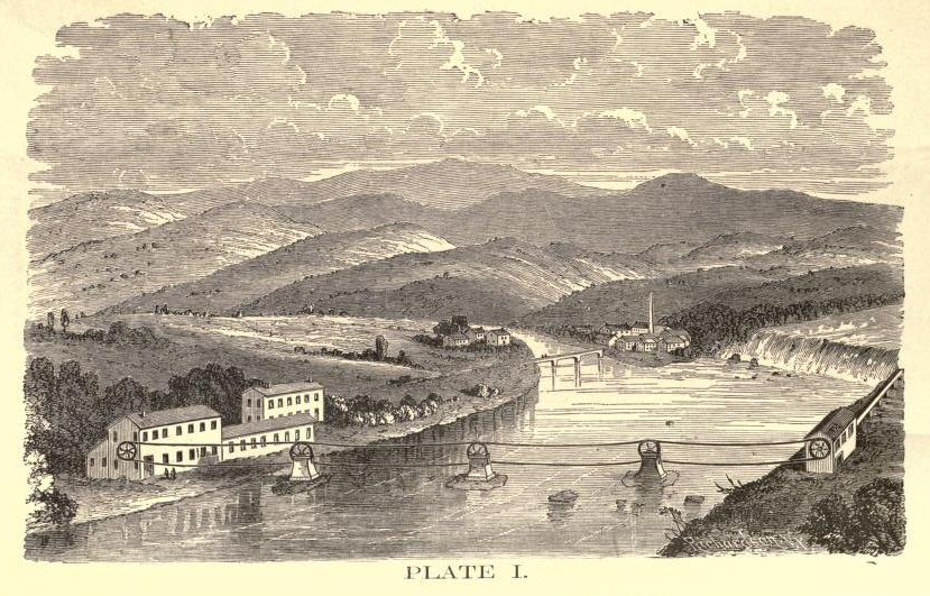
"Wire rope transmission, stands apart from all other power transmission technologies because it doesn't involve any conversion of energy. An endless rope drive transmits mechanical energy directly from a power source to machinery. This makes rope transmission more efficient than any other alternative up to a distance of a few kilometers." Illustration from W.C. Unwin's 1894 book "On the Development and Transmission of Power from Central Station": https://www.lowtechmagazine.com/2013/03/the-mechanical-transmission-of-power-3-wire-ropes.html
42.24 Because Yahweh is the impactor itself, the driving and hauling ropes which are "transmitting" the mechanical power of the hauling Beetle to the impactor are God's "messengers"... in other words: the Angels are the ropes
If angels are described as "messengers" in the Bible, it is only because they are metaphorical glorifications of the hauling ropes: Angels were "messengers" because they were the ones transmitting the power of the hauling Beetle of the Great Pyramid to the impactor; and because we've already seen that the Hebraic god Yahweh is the deification of that impactor, what it means is that "the angel messengers sent by God", are actually about the transmitting ropes which were hauling and raising the impactor to the top of the Grand Gallery.
"In Judaism, angels (Hebrew: מַלְאָךְ mal’āḵ; "messenger"), are understood through interpretation of the Tanakh and in a long tradition as supernatural beings who stand by God in heaven, but are strictly to be distinguished from God (YHWH) and are subordinate to him. Occasionally, they can show selected people God's will and instructions.[15] In the Jewish tradition they are also inferior to humans since they have no will of their own and are able to carry out only one divine command."
"The Torah uses the Hebrew terms מלאך אלהים (mal'āk̠ 'ĕlōhîm; "messenger of God"), מלאך יהוה (mal'āk̠ Yahweh; "messenger of the Lord"), בני אלהים (bənē 'ĕlōhîm; "sons of God") and הקודשים (haqqôd̠əšîm; "the holy ones") to refer to beings traditionally interpreted as angels. Later texts use other terms, such as העליונים (hā'elyônîm; "the upper ones"). The term 'מלאך' ('mal'āk̠') is also used in other books of the Hebrew Bible. Depending on the context, the Hebrew word may refer to a human messenger or to a supernatural messenger." https://en.wikipedia.org/wiki/Angel
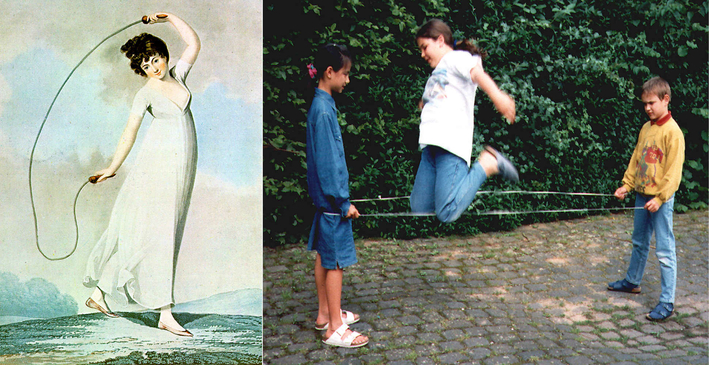
Illustration of the pinup Sophia Western with a skipping rope: https://upload.wikimedia.org/wikipedia/commons/4/4a/1800-jumprope-pinup-Sophia-Western.jpg
Chinese jump rope played by children in Krefeld: https://en.wikipedia.org/wiki/Chinese_jump_rope#/media/File:Gummitwist-1998Kinder2.jpg
42.25 The driving and hauling ropes of the Grand Gallery were like constantly "flying" up and down the Gallery and without ever touching the ground: this is why the "messenger" angels do have wings
If angels are described as "messengers" in the Bible, it is only because they are metaphorical glorifications of the hauling ropes: Angels were "messengers" because they were the ones transmitting the power of the hauling Beetle of the Great Pyramid to the impactor; and because we've already seen that the Hebraic god Yahweh is the deification of that impactor, what it means is that "the Angel messengers sent by God", are actually about the transmitting ropes which were hauling and raising the impactor to the top of the Grand Gallery.
The hauling ropes of the Grand Gallery were transmitting the mechanical hauling forces of the Beetle to the impactor (Yahweh), and they did that without ever touching the ground; this is why they've been glorified into angels.
42.26 The deciphering of Sarah, Hagar and Abraham [1] • Hagar is the angel: Hagar is about the ropes
First of all, I want to emphasize one more time how deeply respectful I am of every religious person; I really didn't expect that this study that started on ancient Egypt alone, is now fully dedicated to the Hebraic religion, and I am only following some kind of natural path. Anyhow, what I'm deciphering little by little, is only about the origin of the Hebraic religion, and it is not a judgment on what this religion has become over time.
Religions' only goal is to unite people and create a community where everyone is sharing common values, and that isn't changed by my work; and what I'm gonna reveal about Sarah, Sarai, Abram, Abraham, Lot or Hagar won't change anything in that manner: Sarah and Abraham will still be the same prophets.
Anyhow, the deciphering of their origin starts here with Hagar: Hagar, Sarah's slave is the key.
On the painting below, there is Hagar and an angel looking at each over while her son Ishmael is laying on the ground in an inanimate posture. Will see later who really is Ishmael when we'll talk about Isaac, but here let's talk about Hagar and the angel.
If you've already read most of the study, you know that ancient Egyptian glorifications of the operation of the Great Pyramid, as well as their Hebraic reinterpretations had used many, many times the same trick by representing different visions of one single thing, in the same "picture".
Here, Hagar and the angel looking at each others, is another expression of that trick: Hagar actually is the angel.
And that is the key of the painting, as well as the key to the comprehension of Hagar: Hagar is the angel, and because the angels are about the ropes of the Grand Gallery, then Hagar is a rope. In other words, when Hagar is looking at the angel, she is looking at herself and explaining that she is gonna be the one taking care of and raising Ishmael up from his inanimate posture.
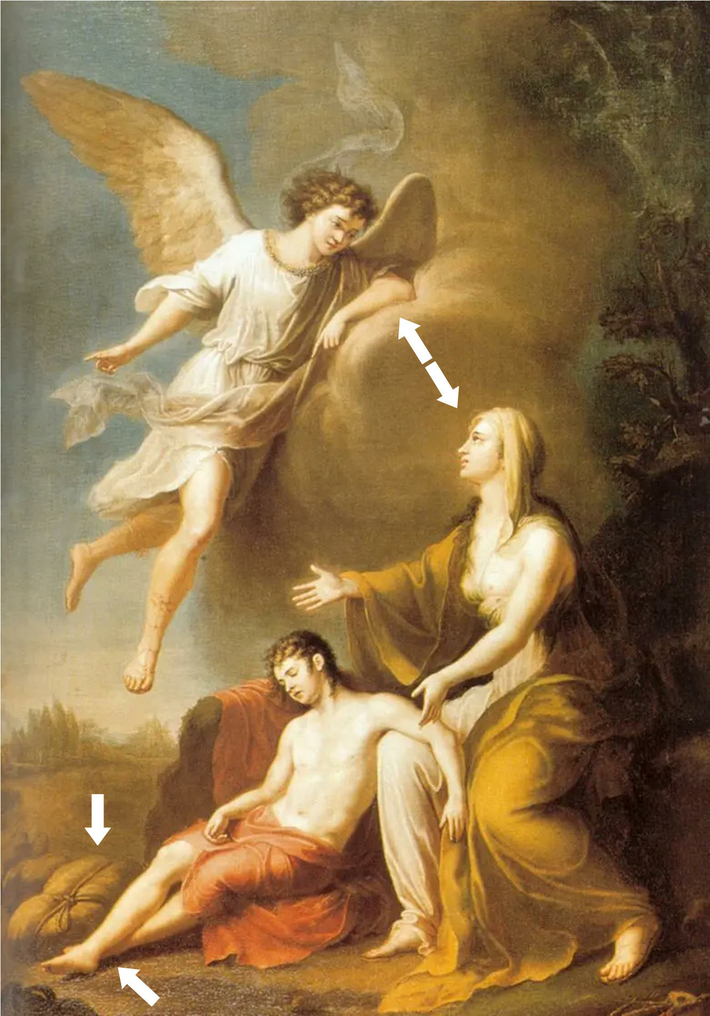
Hagar is banished with a young son Ishmael in the desert, Grigory Ivanovich Ugryumov (1785).
Source: arthive.com/fr/artists/1931~Grigory_Ivanovich_Ugryumov/works/18692~Hagar_is_banished
_with_a_young_son_Ishmael_in_the_desert
42.27 Hagar and the angel looking into each other eyes because Hagar really is the angel
42.28 Ishmael and the idea of transportation itself: the skin of water
I was wondering why did Abraham send Hagar and Ishmael with food and water in the desert, because what is sure now, is that there probably isn't one single thing in the Bible that doesn't have a hidden metaphorical meaning, related to the operation of the Grand Gallery.
And then, I realize that the answer was neither in the food nor it was in the water: the answer is the skin itself.
The fact is that the above painting is actually way more elaborate than it seems: not only Hagar and the angel are both representing the same thing (the hauling ropes, flying in the Gallery and raising the impactor up), but Ishmael and the skin of water are also about the same thing: a transport vehicle.
We know that Ishmael is about the wooden part of the impactor, and that it's only task was to transport efficiently the granite part of the impactor (Ishmael's little brother Isaac); we also know that this granite block would have to be placed at the very "bottom", or northern part of the impactor; so there is no surprise here, if the skin of water is also placed at the very "lower part" of Ishmael: his feet.
In other words, the Ishmael' skin of water is only a metaphorical way of describing the hidden purpose of Ishmael himself, and that is the idea of transportation itself... and of course, so is Hagar herself.
Genesis 21-14 So Abraham rose early in the morning, and took bread and a skin of water; and putting it on her shoulder, he gave it and the boy to Hagar, and sent her away. Then she departed and wandered in the Wilderness of Beersheba. 15 And the water in the skin was used up, and she placed the boy under one of the shrubs. 16 Then she went and sat down across from him at a distance of about a bowshot; for she said to herself, “Let me not see the death of the boy.” So she sat opposite him, and lifted her voice and wept. https://www.biblegateway.com/passage/?search=Genesis+21%3A8-21&version=NKJV
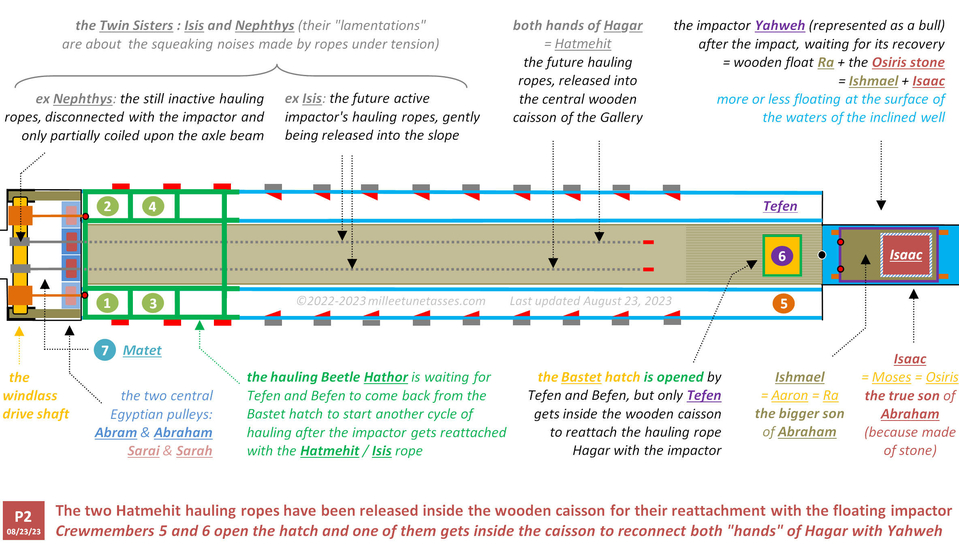
Great Pyramid of Egypt, Operating Phase P2 of the Grand Gallery. Last updated August 23, 2023.
42.29 Operating phase P2: the two future Hagar central hauling ropes have been released for the reconnection with the impactor
Other phases in Section 26 (but incorrectly without the Egyptian pulleys, and with only 3 ropes instead of 4).
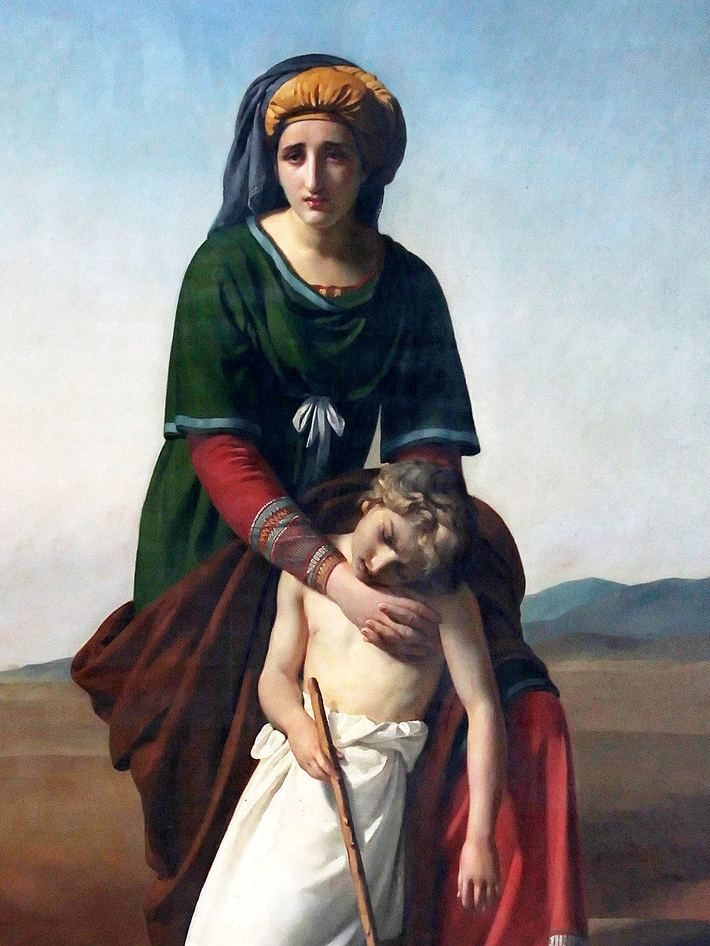
Hagar and Ishmael in the desert: https://en.wikipedia.org/wiki/Hagar#/media/File:Fran%C3%A7ois-Joseph_Navez_-_Agar_et_Isma%C3%ABl_dans_le_d%C3%A9sert_(cropped).jpg
42.30 The deciphering of Sarah, Hagar and Abraham [2] • The two firm hands of Hagar raising Ishmael up
We've just seen that Hagar was all about the ropes of the Grand Gallery, because of the angel; but it doesn't say if Hagar is about the two central hauling ropes, the two lateral driving ropes, of if she is about the four of them at the same time.
But if on the above painting, Hagar is represented so strongly grabbing her inanimate son Ishmael with both hands and that she clearly means to raise him up, with both hands which couldn't be more explicitly displayed, it can only means that Hagar is about the two central ropes hauling the impactor itself.
Of course it also means that Ishmael is either the wooden or granite part of the impactor, or that he is the full composite impactor itself.
"The second time that Hagar meets the Angel of the Lord, years have passed since Ishmael's birth, and one day when Sarah sees Ishmael and her own son Isaac playing together, she becomes afraid that Ishmael will one day want to share in Isaac's inheritance. So Sarah throws Hagar and Ishmael out, and the homeless pair has to fend for themselves in the hot and barren desert.
Hagar and Ishmael wander through the desert until they run out of water, and in despair, Hagar sets Ishmael down under a bush and turns away, expecting him to die and not being able to watch it happen. Genesis 21:15-20 describes: "When the water in the skin was gone, she put the boy under one of the bushes. Then she went off and sat down about a bowshot away, for she thought, 'I cannot watch the boy die.' And as she sat there, she began to sob.
God heard the boy crying, and the angel of God called to Hagar from heaven and said to her, 'What is the matter, Hagar? Do not be afraid; God has heard the boy crying as he lies there. Lift the boy up and take him by the hand, for I will make him into a great nation.'"
https://www.learnreligions.com/angel-helping-hagar-and-ishmael-124034
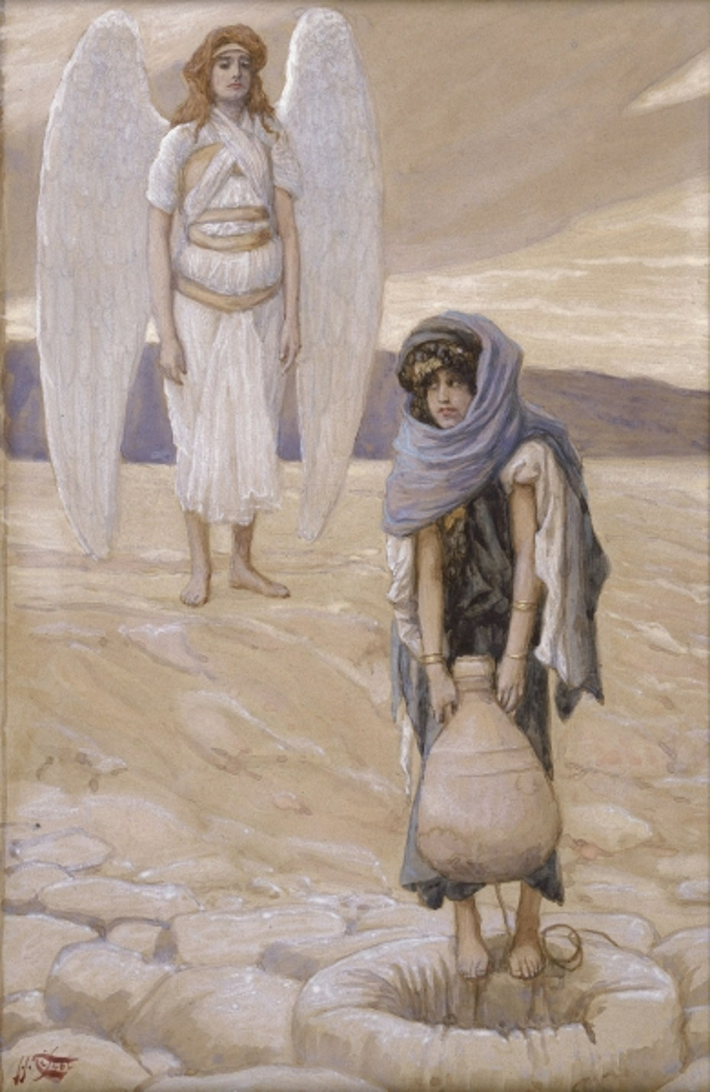
Hagar and the Angel in the Desert, c. 1896-1902, by James Jacques Joseph Tissot (French, 1836-1902), gouache on board, 9 7/16 x 6 in. (23.8 x 15.3 cm), at the Jewish Museum, New York: https://thejewishmuseum.org/collection/26694-hagar-and-the-angel-in-the-desert
Self portrait of James Tissot at the Fine Arts Museums of San Francisco: https://commons.wikimedia.org/wiki/File:James_Tissot_Self_Portrait_%281865%29.jpg
42.31 The deciphering of Sarah, Hagar and Abraham [3] • Hagar getting something out of the mouth of a well with both hands
Of course, the above representation of Hagar by James Tissot is my favorite, because Hagar is standing right next to the mouth of a well and because she is getting "something" (a jar) out of the waters of the well, firmly grabbing it with both hands.
Of course, to understand Hagar, you have to combine the 3 above paintings:
• the two grabbing hands of Hagar
• Ishmael being raised up with these two hands
• the raising process starting at the mouth of the well
When you do add these three components, you do understand Hagar: the reinterpretation of the two Isis ropes which hauled the impactor and raised it from the waters of the inclined well to the top platform of the Grand Gallery.
42.32 The apparent age of an angel is about the length of the rope he is about
Another very fascinating thing we can deduct from the Tissot painting, is about the appearance of the angel: when in real life, in the Great Pyramid, the two central hauling ropes were really reaching the mouth of the inclined well, the ropes would then be completely unwound and 100% of their lengths would be free in the Grand Gallery; and that is most probably the reason why the angel next to the well is in an adult form: the apparent age of an angel is most certainly reflecting the visible part and free length of a rope.
In other words, the age of an angel is an indication on the phase of their operating cycle.
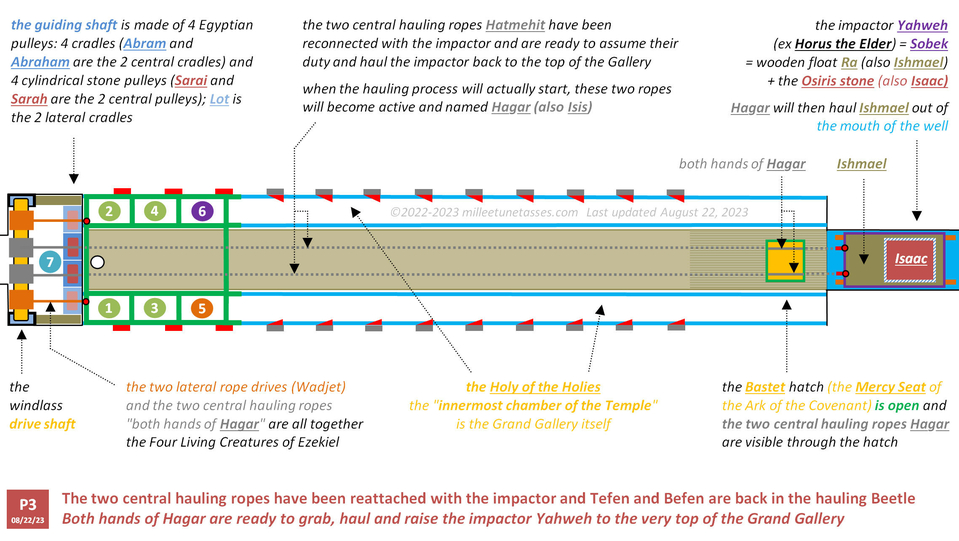
Great Pyramid of Egypt, Operating Phase P3 of the Grand Gallery: the reconnection of the impactor with the two hauling ropes. Last updated August 22, 2023.
42.33 Operating phase P3: the reconnection of the impactor with the two Hagar central hauling ropes is completed
Other phases in Section 26 (but incorrectly without the Egyptian pulleys, and with only 3 ropes instead of 4).
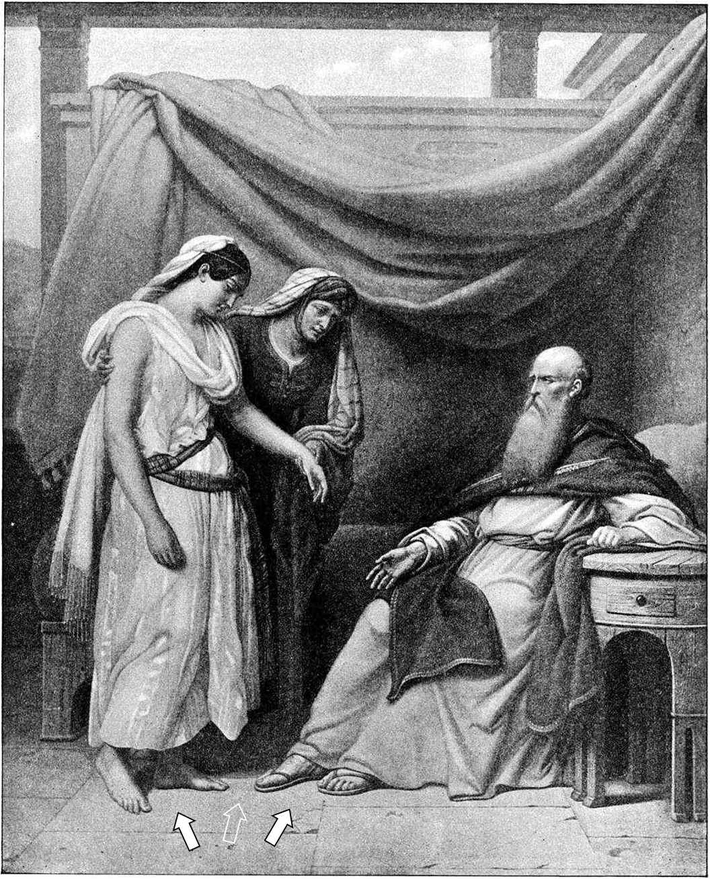
Abraham, Sarah (in the middle) and Hagar (on the left) in a Bible illustration; painting by Charles Foster, published in 1897, Philadelphia, PA: https://en.wikipedia.org/wiki/Abraham#/media/File:Foster_Bible_Pictures_0032-1.jpg
42.34 The deciphering of Sarah, Hagar and Abraham [4] • The perfect illustration of the operation of an Egyptian pulley
42.341 Look at their posture!
What we have here on the above Charles Foster painting, is a perfect artistic reinterpretation of the operation of an Egyptian pulley:
• Abraham (the supporting block of the pulley) is sit and doesn't move an inch from his chair
• Sarah (the pulley wheel), is very active but completely arched, and is restraining Hagar in her hands
• Hagar (the two hauling ropes), is standing perfectly upright but cannot move from Sarah's grip
42.342 Look at their feet!
If you still have some doubts, please look at the feet of the three characters on the painting by James Tissot:
• If Abraham has two beautiful sandals, it is only because of the "anchoring" metaphor that we've already seen in the Two Sandals of Isis, Isis being the ancient Egyptian way of glorifying the active central hauling ropes, really towing the impactor.
• If Hagar (the Hebraic way of glorifying that same active central hauling ropes), doesn't have any sandal on her feet, it is only because she was in some ways "flying" all over the Gallery, and you don't want sandals when doing so.
• And last but not least: if Sarah doesn't show any foot at all, no it is not because Sarah is modest or chaste; it is just because she is the reinterpretation of a pulley, and because the pulley was nested inside its block of stone, you could only have seen the top part of the pulley.
Because the bottom part of an Egyptian pulley is hidden by its supporting cradle block, you simply couldn't have seen Sarah's feet either.
42.35 Sarah, Abraham and Hagar were actually just one operating "Triad"
You will also note that even if the three characters look distant from one another, when you look at their feet, you suddenly realize they are actually supposed to be very close: the three of them are forming a real operating Triad, just like the Egyptian Elephantine Triad (the glorification of the biosand filter's operation, Section 30), or the Memphis Triad (the glorification of the evaporative cold production, Section 22). The three of them really were just one.
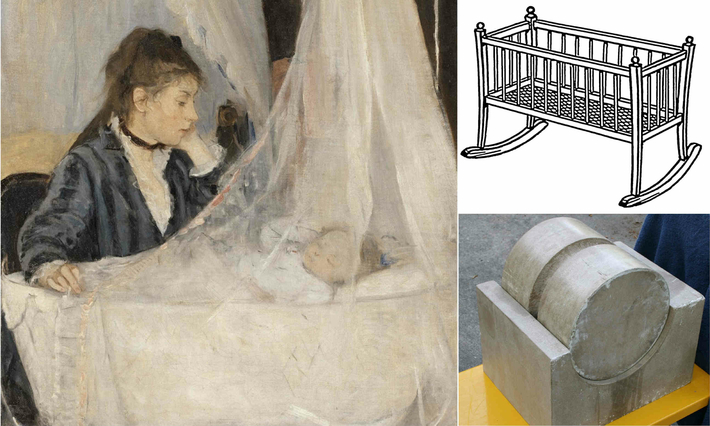
The Cradle, a painting by Berthe Morisot (1872) at the Musée d'Orsay, France - "Undeniably Berthe Morisot's most famous painting, The Cradle was painted in Paris in 1872. It shows one of the artist's sisters, Edma, watching over her sleeping daughter, Blanche. It is the first image of motherhood—later one of her favourite subjects—to appear in Morisot's work." The Yorck Project, Google Arts and Culture: https://artsandculture.google.com/asset/the-cradle/WAE_4Ek4Dn6EnA?hl=en-GB
Rocking cradle, line art drawing by Pearson Scott Foresman: https://en.wikipedia.org/wiki/Cradle_(bed)#/media/File:Cradle_2_(PSF).png
42.36 The operation of an Egyptian pulley metaphors [1] • The founding father Abraham and the cradle metaphor
If Abraham is the Patriarch and the founding father of the Jewish nation, it is only because of the cradle metaphor: the Egyptian pulley block, the base of the Egyptian pulley which Abraham is all about, is nothing less than a cradle.
"Abraham (originally Abram) is the common Hebrew patriarch of the Abrahamic religions, including Judaism, Christianity, and Islam. In Judaism, he is the founding father of the special relationship between the Jews and God; in Christianity, he is the spiritual progenitor of all believers, whether Jewish or non-Jewish; and in Islam, he is a link in the chain of Islamic prophets that begins with Adam and culminates in Muhammad." […] " In Jewish tradition, Abraham is called Avraham Avinu (אברהם אבינו), "our father Abraham," signifying that he is both the biological progenitor of the Jews and the father of Judaism, the first Jew." https://en.wikipedia.org/wiki/Abraham
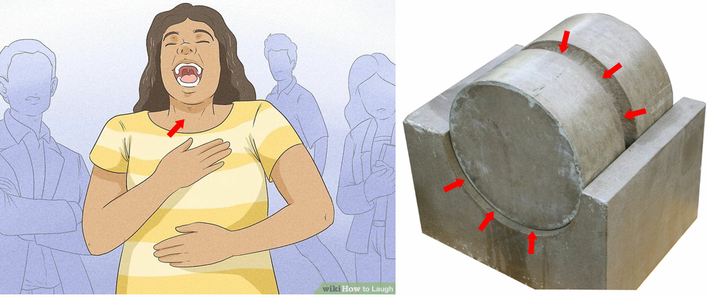
How to laugh, using your throat: https://www.wikihow.com/Laugh#/Image:Laugh-Step-6-Version-4.jpg
42.37 The operation of an Egyptian pulley metaphors [2] • The pulley's grooves and the laughing metaphor "rire à gorge déployée"
Please, tell me nobody really believes that when Sarah and Abraham are told they are gonna have a child of their own, that Sarah will finally bear a child herself, please, oh please, tell me nobody really believes that they both start to laugh at this announcement. When you are told you are gonna be a parent, you can have many reactions depending on the context, but never, oh boy never you burst out laughing.
So yes, "Sarah and Abraham laughing" is another metaphor; and it is about the grooves of the Egyptian guide pulley.
In French, instead of saying "burst out laughing", we would say "rire à gorge déployée" ("gorge" meaning "throat"), because of the laugh that is produced inside the throat; and here that throat is what the metaphor is all about. The Egyptian pulley does have two grooves, i.e. "two throats": Abraham (the block, the cradle) has a groove to accommodate the wheel, and Sarah (the pulley wheel) also has a groove to accommodate the rope.
• Sarah laughing at the idea of bearing a child (Isaac):
"One of the visitors told Abraham that upon his return next year, Sarah would have a son. While at the tent entrance, Sarah overheard what was said and she laughed to herself about the prospect of having a child at their ages. The visitor inquired of Abraham why Sarah laughed at bearing a child at her age, as nothing is too hard for God. Frightened, Sarah denied laughing." https://en.wikipedia.org/wiki/Abraham
"For Sarah, the thought of giving birth and nursing a child, at such an old age, also brought her much laughter, as she declared, "God had made me to laugh, [so that] all that hear will laugh with me." https://en.wikipedia.org/wiki/Sarah
• Abraham laughing at the idea of having a child (Isaac):
"Thirteen years later, when Abram was 99 years of age, God declared Abram's new name: "Abraham" – "a father of many nations". Abraham then received the instructions for the covenant of the pieces, of which circumcision was to be the sign. God declared Sarai's new name: "Sarah", blessed her, and told Abraham, "I will give thee a son also of her". Abraham laughed, and "said in his heart, 'Shall a child be born unto him that is a hundred years old? and shall Sarah, that is ninety years old, bear [a child]?'" Immediately after Abraham's encounter with God, he had his entire household of men, including himself (age 99) and Ishmael (age 13), circumcised." https://en.wikipedia.org/wiki/Abraham
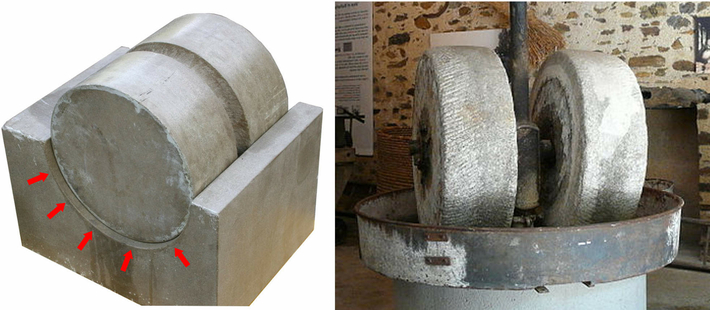
Grinding stones, by Father Igor: https://commons.wikimedia.org/wiki/File:Payzac_papeterie_Vaux_meules.JPG
42.38 The operation of an Egyptian pulley metaphors [3] • The grinding stones metaphor
What is fascinating but almost hopeless, is that everything that is written in the Bible is nothing less than metaphors over metaphors, only connected with each other by some additional text with more or less interest; so it is pretty risky to say "this is a metaphor", or this is not.
But there is another metaphor here, and it is about the "cakes made from choice flour" ordered by Abraham when the Three "Men" are visiting both Sarah and Abraham.
If it is not said that some "chosen cakes" are ordered by Abraham to Sarah, but "choice flour", it is because the flour is important. This part of the story is about the flour and not about the cake, and it is only because the endless rotating movement of Sarah (the stone pulley) inside Abraham (the cradle block stone), would have looked like the way flour is produced using a grinding stone.
In Genesis 18-6 of the New International Version of the Bible, it is even indicated that it is "three seahs of the finest flour" that was needed, while the baking of the bread only seems accessory.
"Not long afterward, during the heat of the day, Abraham had been sitting at the entrance of his tent by the terebinths of Mamre. He looked up and saw three men in the presence of God. Then he ran and bowed to the ground to welcome them. Abraham then offered to wash their feet and fetch them a morsel of bread, to which they assented. Abraham rushed to Sarah's tent to order ash cakes made from choice flour, then he ordered a servant-boy to prepare a choice calf. When all was prepared, he set curds, milk and the calf before them, waiting on them, under a tree, as they ate." https://en.wikipedia.org/wiki/Abraham
Genesis 18-6 So Abraham hurried into the tent to Sarah. “Quick,” he said, “get three seahs of the finest flour and knead it and bake some bread.” Genesis 18 (New International Version): https://www.biblegateway.com/passage/?search=Genesis%2018&version=NIV
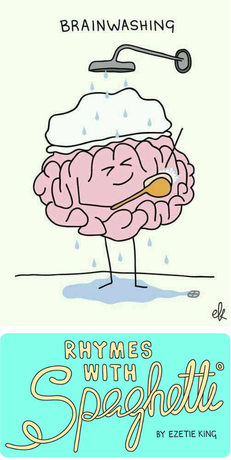
42.39 After the metaphors, the Play on Words: Abram's 99 years old and Abraham's 100 years old should be read .99 and 1.00 (and it is in cubit)
And there is another play on words when it is said that the change of Abram's name occurred at 99 years old: remember, I was wondering if the Egyptian pulleys were 1 cubit wide or not, and we are getting close to the answer here with the 99 years.
Of course 99 isn't about the age of Abram, it is about the length of Abram: 99 shouldn't be read 99 actually, but rather .99; and then when Abram is getting to 100 (that should be read 1.00), there is no Abram anymore, because we simply got to the second central cradle: Abraham.
In my opinion it is telling us that at least the two central Egyptian cradle of the pulleys really were 1 cubit wide.
"Thirteen years later, when Abram was 99 years of age, God declared Abram's new name: "Abraham" – a father of many nations". https://en.wikipedia.org/wiki/Abraham
"Abraham (originally Abram) is the common Hebrew patriarch of the Abrahamic religions, including Judaism, Christianity, and Islam. In Judaism, he is the founding father of the special relationship between the Jews and God; in Christianity, he is the spiritual progenitor of all believers, whether Jewish or non-Jewish; and in Islam, he is a link in the chain of Islamic prophets that begins with Adam and culminates in Muhammad." […] " In Jewish tradition, Abraham is called Avraham Avinu (אברהם אבינו), "our father Abraham," signifying that he is both the biological progenitor of the Jews and the father of Judaism, the first Jew." https://en.wikipedia.org/wiki/Abraham
42.40 There is no Sarai who becomes Sarah, nor there is Abram who becomes Abraham: there are all at the same time both Sarai and Sarah, and there are both Abram and Abraham side to side
I've tried a couple of times in the last two months or so to understand what was Abraham really about, and in my head it would most certainly have been about the hauling Beetle, the impactor or the windlass drive shaft; but I couldn't make it work.
And then I understood about the guiding shaft, and everything cleared up: Sarah and Abraham, as well as Sarai, Abram, Lot, Ishmael and Isaac, they all took their place in the reinterpretation of the hauling process of the impactor.
Of course Sarah and Abraham are the center of this reinterpretation, or should I say Sarah and Abraham, as well as Sarai and Abram were the key; because the same way that ancient Egyptians had originally deified the two driving ropes of the Gallery (one on each lateral ramp), into one single goddess Wadjet, the Hebraic Bible have glorified the two central Egyptian pulleys into one single representation: Sarah (the pulley) and Abraham (the cradle).
What is extraordinary is that the problem of the approximative (to say at least) deciphering of ancient Egyptian hieroglyphs doesn't apply with the Bible (or at least isn't that critical); so when only metaphors have survived in the Egyptian religion, a lot of play on words also survived in the Bible; and they are everywhere, really.
For example, when it is said that Abraham was originally named Abram, and Sarah was originally named Sarai, it shouldn't be taken literally: if their names are very similar, should I say very close, it is only because Abram and Abraham, as well as Sarai and Sarah were all at the same time, in the same place and very close.
They were so close actually that they were really side by side.
42.41 The play on words also by ancient Egyptian themselves: how to get from 360 (degrees) to 365 (days)
This kind of play on words and numbers isn't new: we've already seen that ancient Egyptians had already beautifully used the same trick: because the 360 degrees in a circle sounds very close to the 365 days in a year, they've come up with the myth which is explaining how there were originally only 360 days in a year, before it got to 365.
But this is simply a magnificent way on playing with the fact that 360 and 365 are very close numbers, when at the same time glorifying both a mathematical knowledge and an astronomical knowledge; and that is the perfect illustration of the sophistication of the ancient Egyptian civilization.
Of course, you'll note that the myth is starring god of Science Thoth (more on Thoth and the magnifying glass representation, the universal symbol of Science, on the Dendera ceiling, in Table of Contents).
"Nut had a strong relationship with Geb, her twin brother, as well as Thoth the god of scribes and wisdom. She was the goddess of the Sky and Geb was the god of the Earth. In the morning they were separated but at night they came together, which created the darkness. This is a story the ancient Egyptians used to explain their 365-day calendar. Nut loved Geb and Thoth, but she was married to Ra. When Ra found out about her secret loves, he was furious. He told Nut that she could not have any children on any of the 360 days of the year. This saddened her, so she went to Thoth for help. She gambled with Khonsu (the moon god) to create 5 more days, so she and Geb could have five children. The children were: Osiris was first, Horus was second, Set was third, Isis was fourth, and Nephthys was the fifth. She and Ra also had one daughter named Sekhmet, the lion goddess, who had a flip personality called Hathor the goddess of love and peace. Nut is gorgeous and worshipped, and she was a protective goddess, like Bast (the cat goddess)." https://simple.wikipedia.org/wiki/Nut_(goddess)
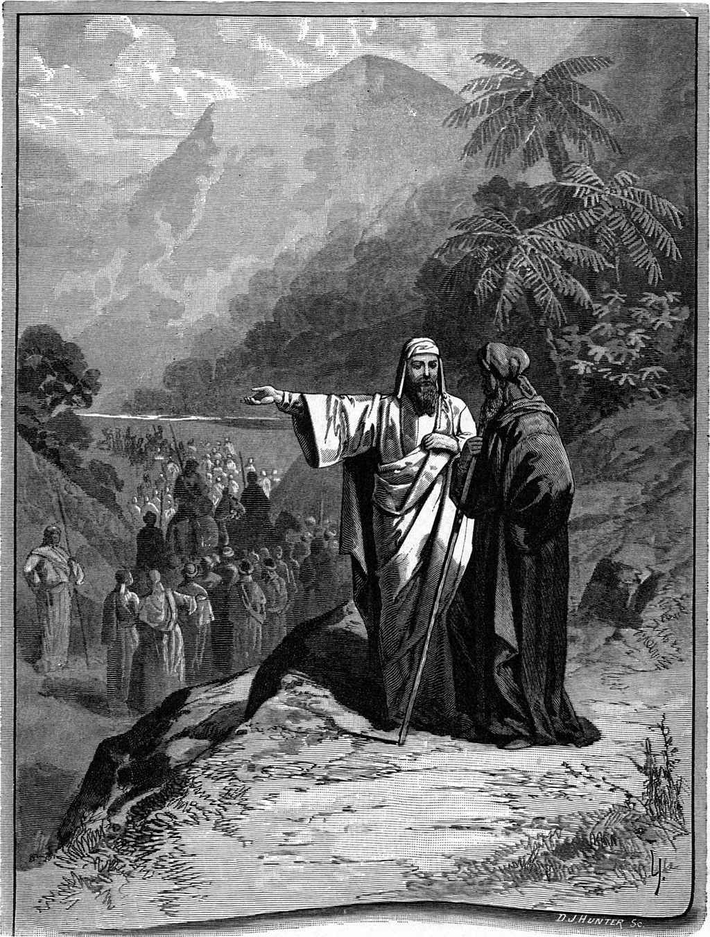
Abraham and Lot Divided the Land (illustration from the 1897 Bible Pictures and What They Teach Us by Charles Foster): https://en.wikipedia.org/wiki/Abraham_and_Lot%27s_conflict#/media/File:Foster_Bible_Pictures_0030-1.jpg
42.42 Abram and Lot separate: "either on the left or on the right hand" means on both hands... because there also was Abraham
There is another play on words here, with Lot and Abram, when both are supposed to separate: if Abram is one of the two central Egyptian cradles, then Lot is about the lateral cradles; and because there is not just Abram, but also Abraham, it means that when Lot decides to go East of Abram, his "double" is then going west of Abraham.
In other words, Lot doesn't go "either on the left or on the right hand": Lot goes both on the left and on the right hand of Abram and Abraham.
"When they lived for a while in the Negev after being banished from Egypt and came back to the Bethel and Ai area, Abram's and Lot's sizable herds occupied the same pastures. This became a problem for the herdsmen, who were assigned to each family's cattle. The conflicts between herdsmen had become so troublesome that Abram suggested that Lot choose a separate area, either on the left hand or on the right hand, that there be no conflict amongst brethren. Lot decided to go eastward to the plain of Jordan, where the land was well watered everywhere as far as Zoar, and he dwelled in the cities of the plain toward Sodom. Abram went south to Hebron and settled in the plain of Mamre, where he built another altar to worship God." https://en.wikipedia.org/wiki/Abraham
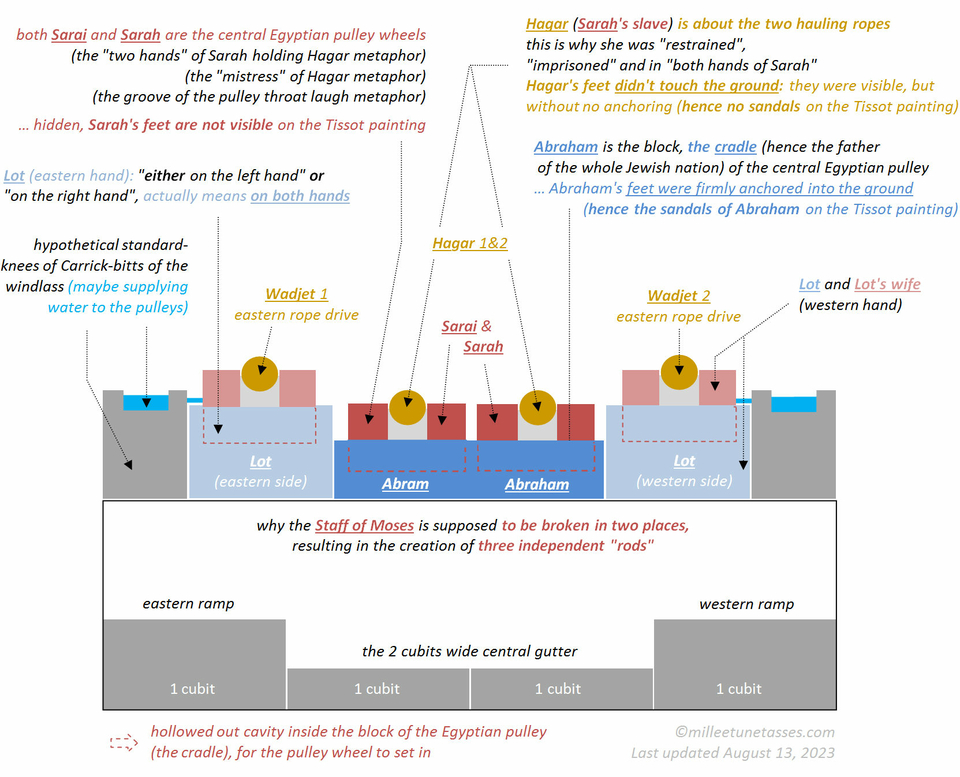
The four ropes of the Grand Gallery were literally passing over Abraham's head
42.43 The four faces = the four sides (a cradle with four sides)
I have only one remark to make about the Blakely's design, and it is about the fact they apparently only designed a cradle with 2 faces: the pulley is free to go laterally.
I'm not saying that the Egyptian pulleys used in the Grand Gallery weren't exactly like the Blakely's design, but I'm wondering if ancient Egyptians would have used "four faces" units instead, so that the pulleys would be perfectly encased inside their cradle block.
In Ezekiel 1, just like in every other text whether originating in the ancient Egyptian religion or the Hebraic Bible, everything is both exposed and covered up in metaphors and play on words; and maybe the "Four Faces" thing is a perfect example of this: when Ezekiel 1 is both talking about "Living Creatures" and " Wheels within Wheels", and mentioning at the same time "Four Faces", maybe these "Four Faces" are not really about the Living Creatures; but rather about the wheels.
This idea is reinforced in Ezekiel 1-18, that is also mentioning "Four Rims", or "Four "awesome" and "so high" rims to be exact; so it is possible that these "Four Faces", and these "Four High Rims" are about the faces of the cradle: as it is said in Ezekiel 1-16, they could really have been literally a "Wheel in the middle of a Wheel", in both directions.
In other words, the cradle of the pulleys could have had not 2 but really 4 faces: the cradle of the pulley was just like a real cradle for a baby, with four high sides, four high rims.
Ezekiel 1-15 Now as I looked at the living creatures, behold, a wheel was on the earth beside each living creature with its four faces. 16 The appearance of the wheels and their workings was like the color of beryl, and all four had the same likeness. The appearance of their workings was, as it were, a wheel in the middle of a wheel. 17 When they moved, they went toward any one of four directions; they did not turn aside when they went. 18 As for their rims, they were so high they were awesome; and their rims were full of eyes, all around the four of them. 19 When the living creatures went, the wheels went beside them; and when the living creatures were lifted up from the earth, the wheels were lifted up.
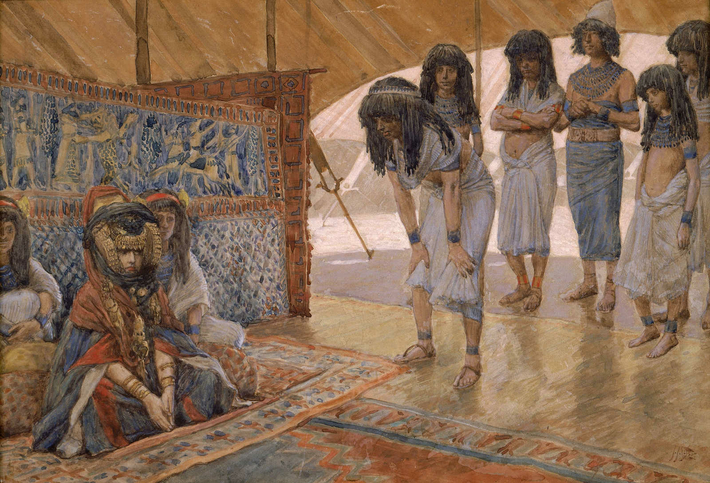
Sarai Is Taken to Pharaoh's Palace by James Tissot (between 1896 and 1902): https://thejewishmuseum.org/collection/26689-sarai-is-taken-to-pharaoh-s-palace
42.44 The so perfect and troubling representations of Sarah and Hagar by James Tissot
Interestingly, when you know what Sarai and Sarah really were all about, the above painting by James Tissot is getting very troubling because of her position, right in the middle of the mat where she is sitting on, and with her face completely bordered on both sides by massive structure.
James Tissot is also the one who painted the representation of Hagar and the angel standing next to the mouth of the well; so the question is the same than the one regarding the Emerald Tablet (Section 35): what did really the authors of these artistic representations" know about what they were doing?
In the painting showing Hagar next to the mouth of the well, you will note that her left foot is put directly onto a tiny little rope… and that makes three representations of a rope into the painting:
• Hagar is the personification of the rope
• the angel is a metaphorical vision of the flying ropes inside the Grand Gallery, without ever touching the ground
• and of course, the tiny little rope nobody is paying attention to, is about the hauling ropes themselves
So, again… what did James Tissot really understood about what he was painting? Was he the one to come up with all these details or did someone guided him to do so?
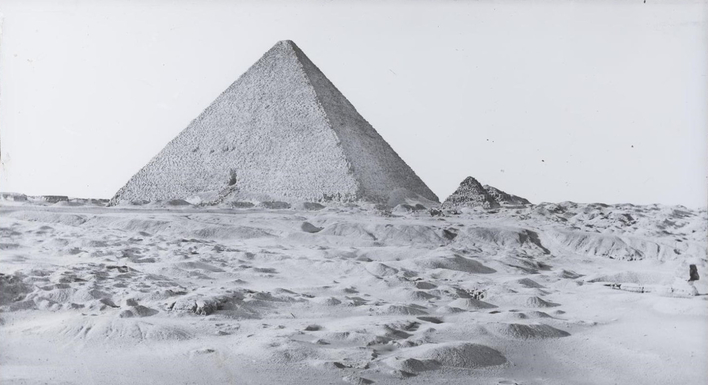
Edited image from a glass plate photographic negative taken in 1865 by Charles Piazzi Smyth of the 'Great Pyramid, its sepulchral hill, the Sphinx' © Royal Observatory Edinburgh CPS Archives: https://www.nms.ac.uk/explore-our-collections/stories/global-arts-cultures-and-design/ancient-egyptian-and-sudanese-collections/ancient-egyptian-collection/pyramid-casing-stone/
42.45 "In the mountain the Lord [Yahweh] was seen"... is of course about the Great Pyramid
"The Binding of Isaac (Hebrew: עֲקֵידַת יִצְחַק ʿAqēḏaṯ Yīṣḥaq), or simply "The Binding" (הָעֲקֵידָה hāʿAqēḏā), is a story from Genesis 22 of the Hebrew Bible. In the biblical narrative, God orders Abraham to sacrifice his son Isaac at Moriah. As Abraham begins to comply, having bound Isaac to an altar, he is stopped by the Angel of the Lord; a ram appears and is slaughtered in Isaac's stead, as God commends Abraham's pious obedience.
According to the Hebrew Bible, God commands Abraham to offer his son Isaac as a sacrifice. After Isaac is bound to an altar, a messenger from God stops Abraham before the sacrifice finishes, saying "now I know you fear God". Abraham looks up and sees a ram and sacrifices it instead of Isaac.
The passage states that the event occurred at "the mount of the LORD" in "the land of Moriah". Chronicles 3:1 refers to "mount Moriah" as the site of Solomon's Temple, while Psalms 24:3, Isaiah 2:3 and 30:29, and Zechariah 8:3 use the term "the mount of the LORD" to refer to the site of Solomon's Temple in Jerusalem, the location believed to be the Temple Mount in Jerusalem. In the Samaritan Pentateuch, Genesis 22:14, the phrase YHWH yireh is taken to mean "in the mountain the Lord was seen", the mountain being Mount Gerizim." https://en.wikipedia.org/wiki/Binding_of_Isaac
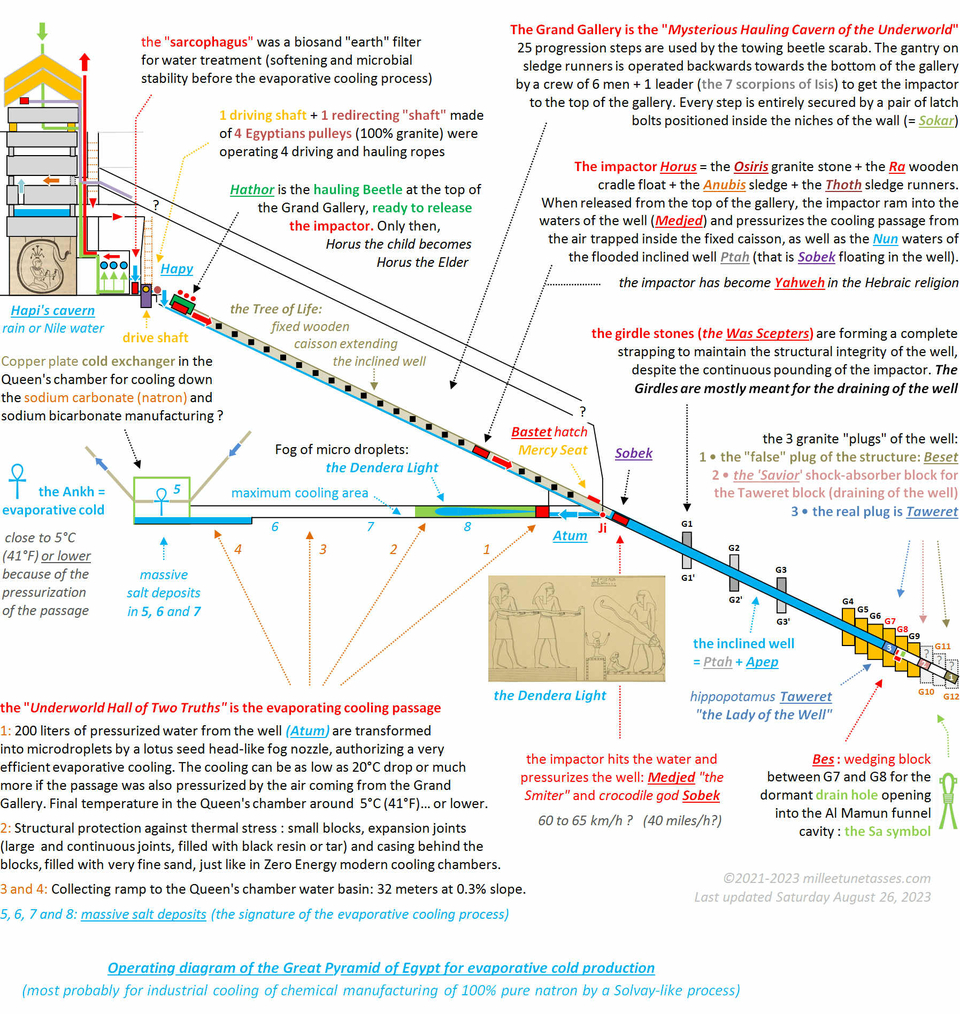
42.46 Operating diagram of the Great Pyramid of Egypt for evaporative cold production
To this day, the reason of why the cold was produced is still hypothetical but highly probable and would have been for experimental, semi-industrial or industrial chemical production of sodium carbonate (natron), by an ammonia-soda Solvay or Solvay-like process. Last updated Saturday August 26, 2023.
42.47 The supreme being God Yahweh who was living in the Great Pyramid
When you think it through, it shouldn't be a surprise that the endless operating of the impactor of the Great Pyramid ended up somehow assimilated to some kind of supreme being, some kind of god. I actually spent a lot of time trying to imagine what people would have feel when being close to the Pyramid in operation, and I encourage you to do that as well: imagine being around the Pyramid, living your day in the nearby town and experiencing literally "in your bones" the endless pounding of the impactor; imagine the endless rumbling sound that would emanate from the whole structure every 15 to 20 minutes or so; and imagine that at the same time you hear this endless pounding sound, you also watch gigantic pressurized air jet(s) coming out of the Queen's chamber's shaft(s).
No wonder everyone would have imagined that some kind of god was living in the Great Pyramid, and that every 15 to 20 minutes or so, you would simply have heard his very beating heart, and saw his very own breathing.
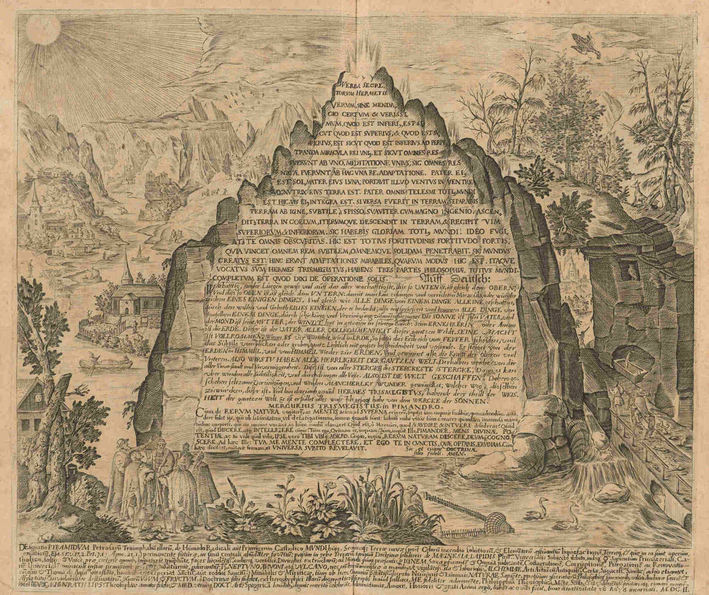
"An imaginative 17th-century depiction of the Emerald Tablet from the work of Heinrich Khunrath (1560-1605)" : https://en.wikipedia.org/wiki/Emerald_Tablet
42.48 Yahweh's Mountain metaphor
Sometimes the metaphors used in ancient texts can be very easy to find but very difficult to understand, and that's the case when Yahweh is described as "being seen inside a mountain", because it's precisely what the phrase "in the mountain the Lord was seen" really means. Of course academic interpretations of the Bible cannot imagine that Yahweh was really inside a "mountain", but rather inside a temple on a mountain; they understood that the mountain was only a metaphor, they simply missed the genuine meaning of that metaphor: the "mountain" isn't a temple on Mount Gerizim, but the Great Pyramid itself.
In other words, Yahweh's realm was really inside the interior of a mountain.
If you remember, we've actually already seen the exact same metaphor associating the Great Pyramid with a mountain, and that was in the Emerald Tablet (Section 35).
42.49 Ishmael and Isaac were indeed... "playing together"
The part of the story where Ishmael and Isaac are described "playing together" is priceless, because the translation of the original text seems to be very complex and sophisticated; and indeed Ishmael and Isaac weren't really playing together: there were together alright, but they weren't playing at all, being two different but assembled components of the composite impactor; each one of them with a very precise task.
"The second time that Hagar meets the Angel of the Lord, years have passed since Ishmael's birth, and one day when Sarah sees Ishmael and her own son Isaac playing together, she becomes afraid that Ishmael will one day want to share in Isaac's inheritance. So Sarah throws Hagar and Ishmael out, and the homeless pair has to fend for themselves in the hot and barren desert."
"God heard the boy crying, and the angel of God called to Hagar from heaven and said to her, 'What is the matter, Hagar? Do not be afraid; God has heard the boy crying as he lies there. Lift the boy up and take him by the hand, for I will make him into a great nation."
https://www.learnreligions.com/angel-helping-hagar-and-ishmael-124034
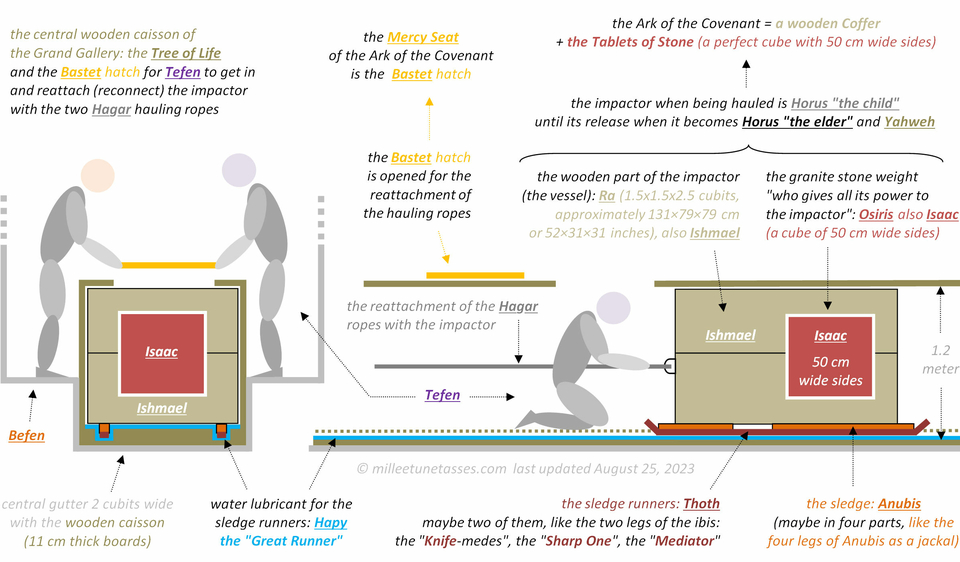
42.50 The impactor of the Great Pyramid of Egypt
The wooden and stone composite impactor of the Great Pyramid of Egypt. Last updated August 25, 2023.
42.51 "What is the matter, Hagar? Do not be afraid: lift the boy up and take him [Ishmael] by the hand"
At first, I got the two sons of Abraham wrong; of course they could have only been about the impactor: one would be the reinterpretation of the wooden part and the other one the reinterpretation of the granite part.
And when we see Hagar (the mother of Ishmael) very firmly grabbing him up with her two hands just so she could grab and lift him up, then we know Ishmael is the wooden part: the physical connection was between the central hauling ropes (both hands of Hagar), and the wooden part of the impactor. Also, Ishmael is the Elder son, i.e. the "big brother" because the wooden part was the bigger part of the impactor.
Also, Isaac is the only "True Son" of Abraham, as said in the Bible; and because we know that Abraham was actually made of stone (probably granite), then his true son also had to be in stone. It means that Isaac is the reinterpretation of the granite part of the composite impactor. Also, Isaac is the Younger son, i.e. the "small brother" because the granite part was the smaller part of the impactor.
In short:
• the ancient Egyptian god Ra = the wooden part of the composite impactor = Ishmael
• the ancient Egyptian god Osiris = the granite part of the composite impactor = Isaac
"Ishmael was the first son of Abraham, the common patriarch of the Abrahamic religions, through his second wife, the Egyptian slave Hagar (Genesis 16:3). According to the Genesis account, he died at the age of 137 (Genesis 25:17)." https://en.wikipedia.org/wiki/Ishmael
"The second time that Hagar meets the Angel of the Lord, years have passed since Ishmael's birth, and one day when Sarah sees Ishmael and her own son Isaac playing together, she becomes afraid that Ishmael will one day want to share in Isaac's inheritance. So Sarah throws Hagar and Ishmael out, and the homeless pair has to fend for themselves in the hot and barren desert.
Hagar and Ishmael wander through the desert until they run out of water, and in despair, Hagar sets Ishmael down under a bush and turns away, expecting him to die and not being able to watch it happen. Genesis 21:15-20 describes: "When the water in the skin was gone, she put the boy under one of the bushes. Then she went off and sat down about a bowshot away, for she thought, 'I cannot watch the boy die.' And as she sat there, she began to sob.
God heard the boy crying, and the angel of God called to Hagar from heaven and said to her, 'What is the matter, Hagar? Do not be afraid; God has heard the boy crying as he lies there. Lift the boy up and take him by the hand, for I will make him into a great nation.'
https://www.learnreligions.com/angel-helping-hagar-and-ishmael-124034
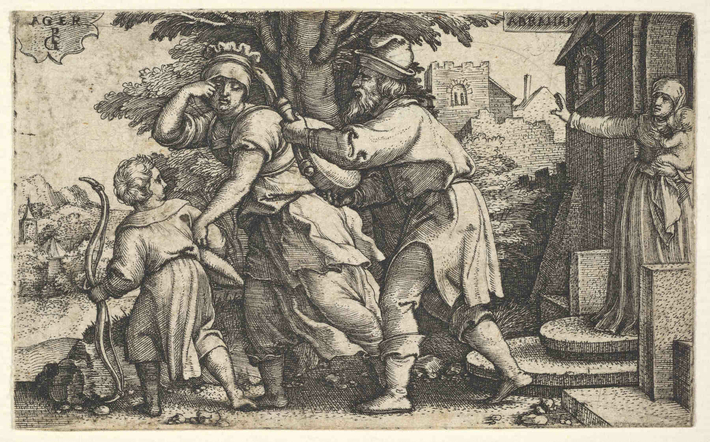
"Abraham sending away Hagar and Ishmael: Abraham holds forth a vessel as Hagar and Ishmael stride before him", from the series 'The Story of Abraham' by Georg Pencz German: https://www.metmuseum.org/art/collection/search/399037
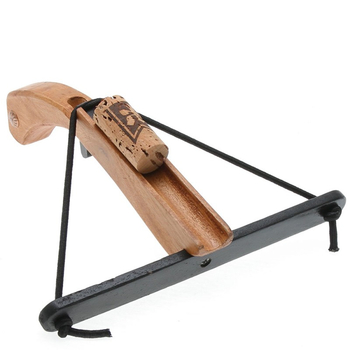
42.52 Ishmael and the archer/crossbow metaphor
Knowing that Ishmael is another reinterpretation of the wooden part of the impactor of the Great Pyramid, the above illustration is very troubling, as it is depicting Ishmael (the wooden "vessel") leading his mother Hagar (the two central hauling ropes connected to the wooden part of the impactor), with Abraham supplying water to her.
The troubling part is that if this scene would have to be taken "literally", it would contradict the initial assumption that the impactor was released only after it had been disconnected with the hauling ropes. So, I really don't know what to think about this image, maybe I'm simply trying too hard to find clues everywhere and to assume the artists did know enough so that their work would perfectly reflect the true original events they are depicting.
Anyway, this above Pencz engraving is representing Ishmael with a crossbow, and that is in perfect adequacy with the fact Ishmael is the wooden part of the impactor: another way of describing the operation of the central gutter of the Grand Gallery and its interaction with the impactor, is indeed by using the crossbow metaphor.
Of course, the crossbow metaphor is quite perfect all by itself, but if you think of the mini crossbows kids can play with today, using simple corks as bullets, then the crossbow metaphor gets even better!
Mini crossbow with cork bullets at https://unjeudesjouets.com/2822-jouet-arbalete-en-bois-avec-3-bouchons-de-liege-8488090015425.html
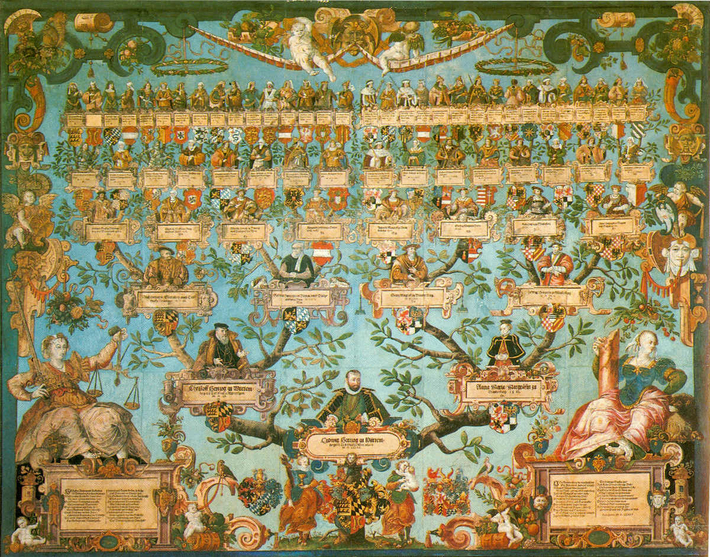
The family tree of Louis III, Duke of Württemberg (ruled 1568–1593) at the Landesmuseum Württemberg (Württemberg State Museum): https://en.wikipedia.org/wiki/Genealogy#/media/File:900-158_Ahnentafel_Herzog_Ludwig.jpg
42.53 Ishmael and the family tree metaphor about his true "wooden nature"
Like I said before, I have no doubt that in 50, 60, or 80 years, the entire world will dig into the ancient or modern religions to find and understand as many metaphors and play on words as possible; everyone is gonna want to play that game… and there is another of these metaphors: the family tree.
We've already seen why Abraham was the father of a Great Nation: it is because of the cradle metaphor; but here this is Ishmael who is also described as the father of a Great Nation, and of course it can't be about the cradle of the Egyptian pulleys.
But because Ishmael is the wooden part of the impactor, another metaphor has been used: the family tree metaphor.
The metaphor used with Ishmael here, is actually very close to the one we've already seen with Osiris and the Seed metaphor: the key here, is the well; because it is only by watering your seed or your tree that you can expect a correct germination and growth. Of course, with all the waters of the inclined well (endlessly resupplied with new water from the biosand filter), there would have been no problem what so ever, either for the Osiris seed nor for the Ishmael "family tree" to grow and prosper.
"Eldest son of Abraham by his concubine Hagar; born when Abraham was eighty-six years of age (Gen. xvi. 15, 16). God promised Abraham that His blessing should be upon Ishmael, who, He foretold, would beget twelve princes and would become a great nation (Gen. xvii. 18, 20). Ishmael was circumcised at the age of thirteen (Gen. xvii. 23-26). When Sarah saw Ishmael mocking her son Isaac, his brother, younger by fourteen years, she insisted that Abraham cast out Ishmael and his slave-mother. Abraham reluctantly yielded, having provided them with bread and a bottle of water. Ishmael was about to die of thirst when an angel showed his mother a well, repeating to her at the same time that Ishmael would become a great nation." https://www.jewishencyclopedia.com/articles/8251-ishmael
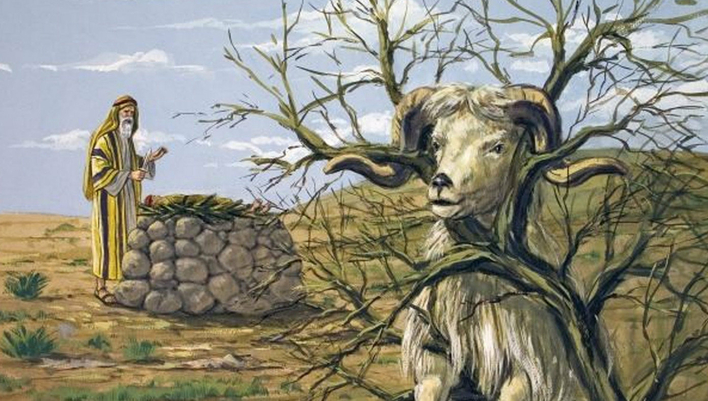
http://ekladata.com/catechisme.eklablog.com/perso/BD-ABRAHAM/Abraham-et-Isaac-BD2.pdf
"At some point in Isaac's youth, Abraham was commanded by God to offer his son up as a sacrifice in the land of Moriah. The patriarch traveled three days until he came to the mount that God told him of. He then commanded the servants to remain while he and Isaac proceeded alone into the mount. Isaac carried the wood upon which he would be sacrificed. Along the way, Isaac asked his father where the animal for the burnt offering was, to which Abraham replied "God will provide himself a lamb for a burnt offering". Just as Abraham was about to sacrifice his son, he was interrupted by the angel of the Lord, and he saw behind him a "ram caught in a thicket by his horns", which he sacrificed instead of his son. The place was later named as Jehovah-jireh. For his obedience he received another promise of numerous descendants and abundant prosperity. After this event, Abraham went to Beersheba." https://en.wikipedia.org/wiki/Abraham
"According to the Hebrew Bible, God commands Abraham to offer his son Isaac as a sacrifice. After Isaac is bound to an altar, a messenger from God stops Abraham before the sacrifice finishes, saying "now I know you fear God". Abraham looks up and sees a ram and sacrifices it instead of Isaac. The passage states that the event occurred at "the mount of the LORD" in "the land of Moriah". 2 Chronicles 3:1 refers to "mount Moriah" as the site of Solomon's Temple, while Psalms 24:3, Isaiah 2:3 and 30:29, and Zechariah 8:3 use the term "the mount of the LORD" to refer to the site of Solomon's Temple in Jerusalem, the location believed to be the Temple Mount in Jerusalem. In the Samaritan Pentateuch, Genesis 22:14, the phrase YHWH yireh is taken to mean "in the mountain the Lord was seen", the mountain being Mount Gerizim." https://en.wikipedia.org/wiki/Binding_of_Isaac
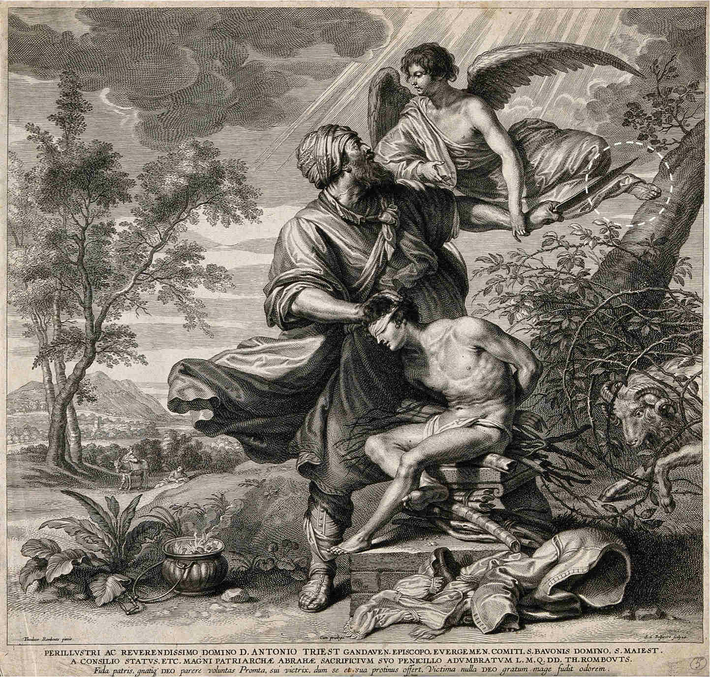
The Binding of Isaac: the angel intervenes as Abraham prepares to "sacrifice" Isaac. Engraving by S.A. Bolswert, c. 1620, after Rombouts, Theodoor, 1597-1637; Wellcome Collection in London: https://wellcomecollection.org/works/sc8ztm6j/items
42.54 The Binding of Isaac [1] • Abraham cutting off the angel's leg
There are many representations of the Binding of Isaac, but the one engraved by S.A. Bolswert, c. 1620, after Theodoor Rombouts, is probably the most fascinating and the most revealing of all.
If I'm saying that, it is mostly because of the angel; because remember: angels are representations of the ropes of the Grand Gallery, and the angel is the key on the Bolswert engraving:
• the angel's foot is put on the trunk of the tree
• Abraham's knife is put on the leg of the angel
Look at the angel's leg and at the angel's foot, and then look at the knife held by Abraham. What do you see? Is the knife really meant for Isaac? Of course not: the knife is clearly meant for the leg of the angel.
Now, look at the foot of the angel, and how it is leaning upon the tree; and also how the tree itself isn't standing upright at all.
Of course, if you don't know that Abraham is only a pure metaphoric representation of one of the central Egyptian pulley cradles of the Grand Gallery, no way you can figure out what is this illustration really all about; but if you do, you can explain it perfectly: what Abraham is really doing is cutting the leg of the angel, i.e. he is cutting the rope.
But this is only another metaphor: Abraham isn't really cutting any rope, but he is representing the fact that the rope had to be disconnected with the impactor.
We've already seen that Isaac is the reinterpretation of the granite stone of the impactor, and what the Binding of Isaac is all about is the disconnection of Isaac, i.e. the impactor, with the two central hauling ropes.
You may think there is only one leg, i.e. only one rope at play here, but there really isn't: the angel, like everybody else has two legs, and the knife is actually "supposed" to cut them both.
In other words, the knife "cutting the leg" of the angel is only a very elaborate artistic representation of the disconnection of the two hauling ropes with the impactor.
42.55 The Binding of Isaac [2] • The impactor's load transfer to the quick release mechanism of the Gallery
If the Binding of Isaac with Abraham is one of the most iconic scene of the Bible, it is because it founds its origin in what is maybe the most important operating phase of the Grand Gallery: the impactor's load transfer from the two central hauling ropes (both hands of Hagar), to the quick release mechanism from which the impactor would be released into the steep slope of the Gallery.
This is the probable sequence that allowed the impactor's load transfer:
• the hauling process is achieved and the impactor arrives at the very top of the Grand Gallery
• probably some kind of hooks at the upper end of the impactor engage themselves into a locking mechanism that is part of the two central pulley cradles (Abram and Abraham)
• then the two central hauling ropes (both hands of Hagar) can be disconnected with the impactor
• finally, the impactor's "hooks" have to be disengaged with the locking mechanisms to release the impactor
42.56 The Binding of Isaac [3] • The ram caught in the thicket is the impactor "caught" in the central wooden caisson
Of course, nor Isaac or the ram are supposed to be sacrificed here, but once the impactor's load had been transferred to the pulley cradles, then the impactor can be released inside the central wooden caisson of the Gallery… hence the ram speeding up through the thicket.
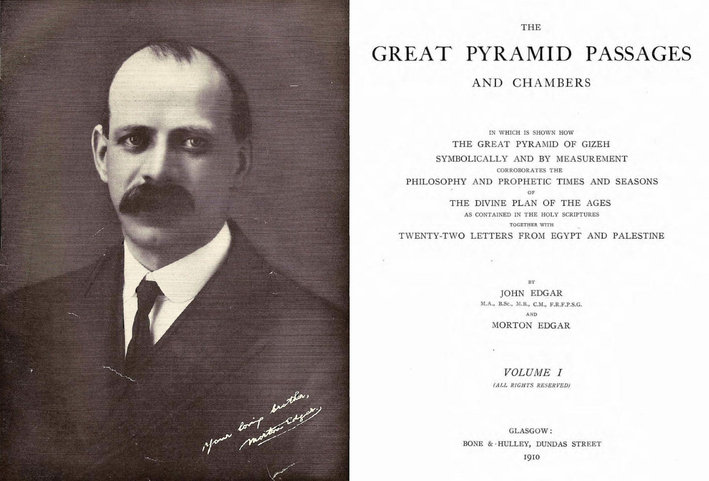
"Morton Edgar (June 28, 1884 - February 6, 1950) was a Scottish amateur archeologist, and pyramidologist active in first half of the 20th century. Morton, along with his brother John Edgar (1862 - 1812), was a student of the pyramidologist Charles Taze Russell (1852 - 1916), who advocated the theory that the Great Pyramid was a 'Bible in Stone' - essentially a mystical artifact deeply connected to the End of Days and the events predicted in Revelations. John Edgar died in 1910, just as the book on pyramidology the brothers wrote together went to press. Morton went on to become a full-time public speaker, traveling extensively in Europe and the United States, promoting the pyramidology theories of the Edgar brothers." https://www.geographicus.com/P/ctgy&Category_Code=edgarmorton
42.57 Is the origin of the Jewish people literally in the Great Pyramid?
As we've already seen in Section 6, about the inclined well's layout and the girdle stones, the Edgar brothers were engaged into a double vision of the Great Pyramid: parallel to a thorough scientific approach they added a complete symbolic and religious interpretation layer, seeing the Great Pyramid as the work of Hebrews, who would have encoded many parts of the Bible into the design of the Pyramid.
What I'm slowly discovering, is that the Edgar brothers were actually very close to find out the truth about the Great Pyramid; because it is indeed related to the Bible.
At first glance, one could think that "the truth" is in the exact opposite direction taken by the Edgar brothers, and that Hebrews didn't build the Great Pyramid, but simply "reinterpreted" it.
But the more I think about it, the more I'm wondering who were the first group of people who actually did this reinterpretation?
Why the Jews are proclaiming to be God's chosen people, and why everything I've discovered so far about the Hebraic reinterpretation of the original ancient Egyptian scientific and technological accomplishment program is only about what happened inside the Grand Gallery and related only with the operating of the impactor?
What I'm starting to think is that Hebrews may have been born from the original very limited amount of people who were actually operating the Grand Gallery 4,500 years ago.
If this is right, the Edgar brothers weren't so wrong proclaiming the Hebrews built the Great Pyramid, because it would have been their direct ancestors building and/or operating the Pyramid.
"Among the more eminent of the early pyramidologists were the brothers Edgar (?-1910) and John (?-1950) Morton of Scotland. After some years of research, in June-July 1909 they traveled to Egypt to advance their inquiries by means of first-hand observation, measurement and photography of the Great Pyramid. Edgar died in 1910, but some time that year was published the first volume of their magnum opus, The Great Pyramid Passages and Chambers In Which Is Shown How the Great Pyramid of Gizeh Symbolically and By Measurement Corroborates the Philosophy and Prophetic Times and Seasons of the Divine Plan of the Ages, as Contained in the Holy Scriptures (Glasgow: Bone & Hulley, 1910).
Early on in The Great Pyramid the Edgars tag as their intellectual and spiritual guide one Charles Taze Russell, whose deep study of Scripture “enabled [him] to discover symbolic and prophetic features in the Great Pyramid, which had necessarily been hidden from previous Pyramid students” (pp. 15-17). Russell (1852-1916) was a Pittsburgh minister and founder of the Bible Student movement, from which the Jehovah’s Witnesses developed after his death. He sought to strip away the theological accretions of the mainstream Christian denominations and restore the faith to its 1st-century roots. His views extended to pyramidology, and he argued that the Great Pyramid had been built by the Hebrews and “that the various ascending and descending passages represented the fall of man, the provision of the Mosaic Law, the death of Christ, the exultation of the saints in heaven, etc.”
The Great Pyramid appears to be the Edgars’ attempt to put meat on the bones of Russell’s work, by bolstering his arguments with their empirical observations at Giza. Per the title, it was the significance of the pyramid’s internal layout and structure that was of particular interest to them. The work is heavily illustrated with photographs, drawings and diagrams, perhaps the most important of which is “Passage System of the Great Pyramid of Gizeh”
https://bostonraremaps.com/inventory/great-pyramid-john-morton-edgar-1910/
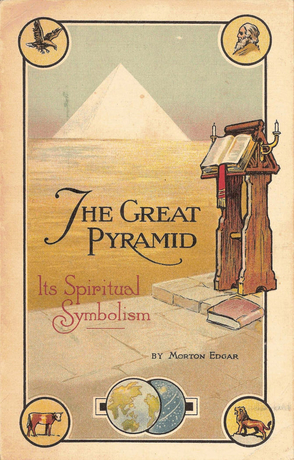
Excerpt from "The Great Pyramid, its Spiritual Symbolism", by Morton Edgar (1924)
"The First Ascending Passage represents the Law Covenant, or, from another point of view, the Law Dispensation. On examining the floor of the Descending Passage, which represents the downward course of " this present evil world," it will be found that the portion which faces the entrance to the First Ascending Passage is composed of extremely hard limestone, whereas above and below this it is softer, and consequently much worn by the traffic of centuries. The hardness of the floor at this part was intended for the purpose of exact measurements, but it was also intended to signify the fact that at the time when the Israelites were called out of Egypt to be the people of God, their standing with the Lord was firm and sure." https://www.catholic-forum.com/members/popestleo/The_Great_Pyramid_Its_Spiritual_Symbolism.pdf
Great Pyramid Passages Volume 1 (1910 edition), by John and Morton Edgar: https://archive.org/details/GreatPyramidPassagesVol11910Edition/page/n175/mode/2up
"Great Pyramid Passages and Chambers, Volume 1 (1910 edition). By John and Morton Edgar. The Edgars were associates of Charles Taze Russell and wrote this treatise in defense of Russell's views on the prophetic symbolism of the Great Pyramid of Gizeh in Egypt. This volume was advertised in the August 1, 1910 Watch Tower and was sold by the Brooklyn and London branches of the Watchtower Society. It was later revised in 1923. This was circulated among Bible Students (Jehovah's Witnesses) until 1928. Bible Students who retained Russell's teachings still circulate the volume."
The Pyramids of the Cold version 2 (May 2023 - March 2024)
Summary of the study and Table of Contents
Part A: The evaporative cooling process
Section 1 • The horizontal evaporative cooling passage layout
Section 2 • The Dendera Light and the creation of the fog of microdroplets by the fog nozzle
Section 3 • The water cycle glorifying metaphors: Geb, Shu, Nut, Tefnut
Section 4 • The theorization of the evaporative cooling process by Akhenaten and Nefertiti
Section 5 • The theorization of the evaporative cooling process in the Weighing of the Heart
Part B • The inclined well of the Great Pyramid of Giza
Section 6 • The inclined well layout and the girdle stones
Section 7 • The Taweret "Lady of the Well" temporary sealing granite plug of the well
Section 8 • The Bes temporary wedging block immobilizing Taweret
Section 9 • The draining of the well
Section 10 • The Great Serpent Apep and the snake water metaphors
Section 11 • The Was scepter and the control over "snakes"
Section 12 • The beating Heart of the Great Pyramid
Part C • The composite impactor of the Great Pyramid (Horus, Ra, Osiris, Medjed, Sobek...)
Section 13 • The wooden and stone composite design of the impactor: Ra and Osiris
Section 14 • The endlessly immersed Osiris stone and the seed metaphor
Section 15 • The Anubis sledge and the bobsled mask
Section 16 • The sledge runners of the impactor: Thoth
Section 17 • Medjed: the smiter nobody can ever see
Section 18 • The Apis bull and the ramming impactor's metaphors
Section 19 • The crocodile god Sobek impactor (more or less) floating in the waters of the well
Section 20 • The Obelisk and the Benben stone rising from water
Part D • The Grand Gallery's of the Great Pyramid of Giza
Section 21 • The Sacred "sloping paths" of the "oval-shaped cavern of the act of Hauling"
Section 22 • The central wooden caisson of the Gallery: Sekhmet and the Triad of Memphis
Section 23 • The hauling ropes of the Grand Gallery: Isis, Nephthys, Hatmehit, Wadjet and Nekhbet
Section 24 • The hauling Beetle and the Seven Scorpions of Isis
Section 25 • The Great Cow goddess Hathor and the operating cycle of the hauling Beetle
Section 26 • The 10 operating phases of the Grand Gallery
Section 27 • The guide to the Afterlife for the smart traveler and the canopic jars
Section 28 • The scarab amulet glorifications of the hauling Beetle
Part E • The very large and roughly finished sarcophagus of the Great Pyramid
Section 29 • The biosand filter sarcophagus of the Great Pyramid
Section 30 • The Elephantine Triad deification of the biosand filter of the Great Pyramid
Section 31 • The Great Pyramid's operating flat roof and the water supply issue
Part F • Chemical manufacturing and industrial cooling before the Great Pyramid
Section 32 • The Serdab and the "Refreshment of the Gods" Step Pyramid of Djoser
Section 33 • Sneferu's Red Pyramid and the accumulated ammonia
Section 34 • The Disc of Sabu and the Solvay process for pure natron manufacturing
Part G • The tremendous impact of the Great Pyramid on the whole ancient world
Section 35 • The hidden secrets of the Hermetica Emerald Tablet (around 1600 C.E.)
Section 36 • Thor and the magical Hammer in the Great Hall of Bilskirnir
Section 37 • The Churning of the waters of the Ocean of Milk (Hindu mythology)
Section 38 • The Tibetan prayer wheels and the Grand Gallery's operation
Section 39 and Conclusion • The cooling water of spitting Kebechet
Part H • Epilogue
Section 40 • The smiting Ark of the Covenant and the Ten Commandments
Section 41 • The 293 kilograms windlass Staff of Moses and Aaron... and the First Plague of Egypt: water turning into blood
Section 42 • Ezekiel's Four Egyptian pulley "Wheels within the Wheels" and the four angel ropes
Section 43 • David, Saul, two giant Goliaths, five little stones, an aeolian harp... and a weaver's beam
Section 44 • The holy water fonts and the biosand filter
Part I • The magicians of the Great Pyramid of Giza
Section 45 • The Legend of Khufu and the "magician" polymath Imhotep
Section 46 • The two magical eyes of Isis and the brilliant but painful flame of her twin sister's braids
Poster un commentaire

